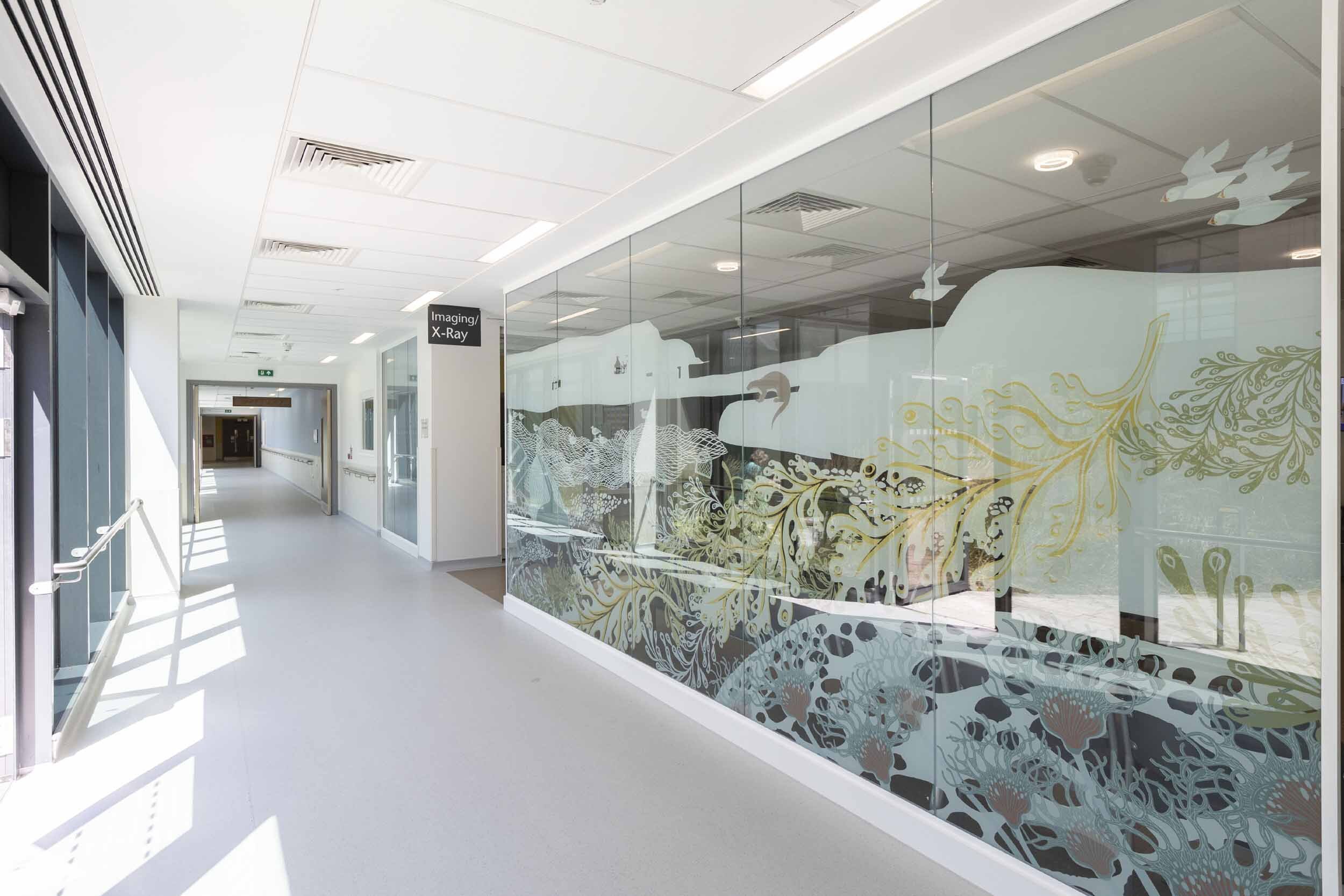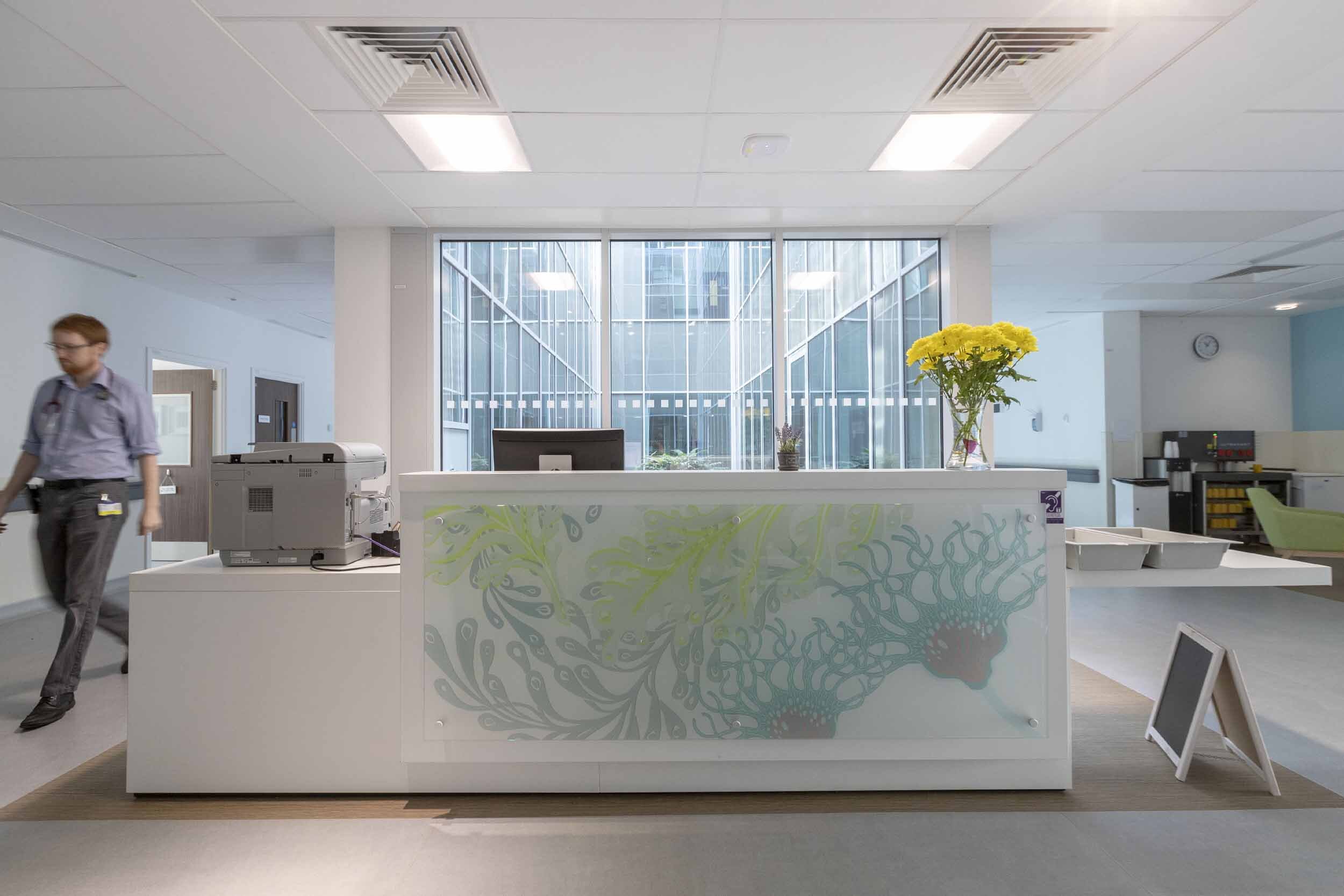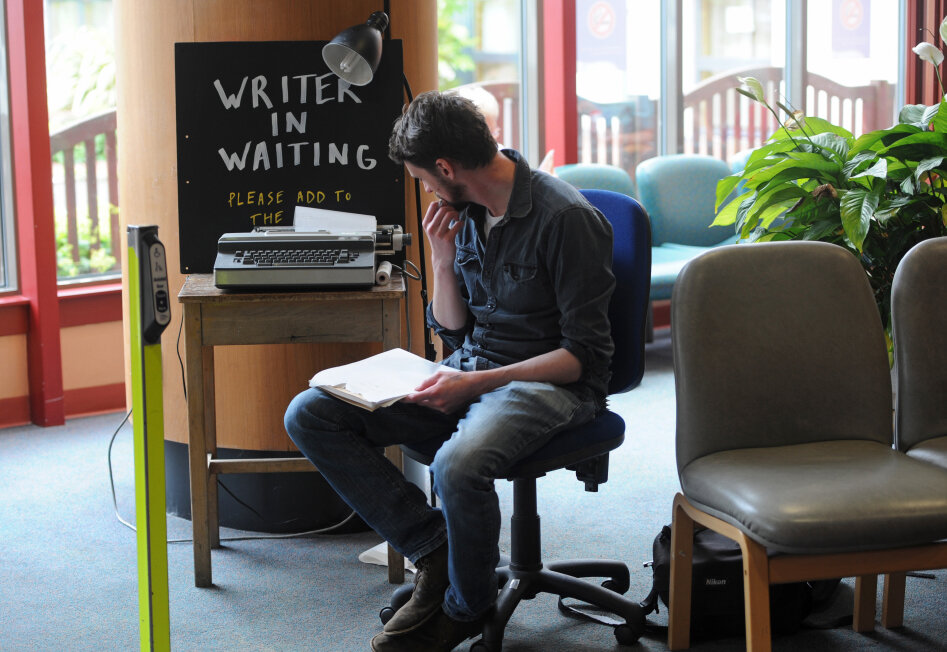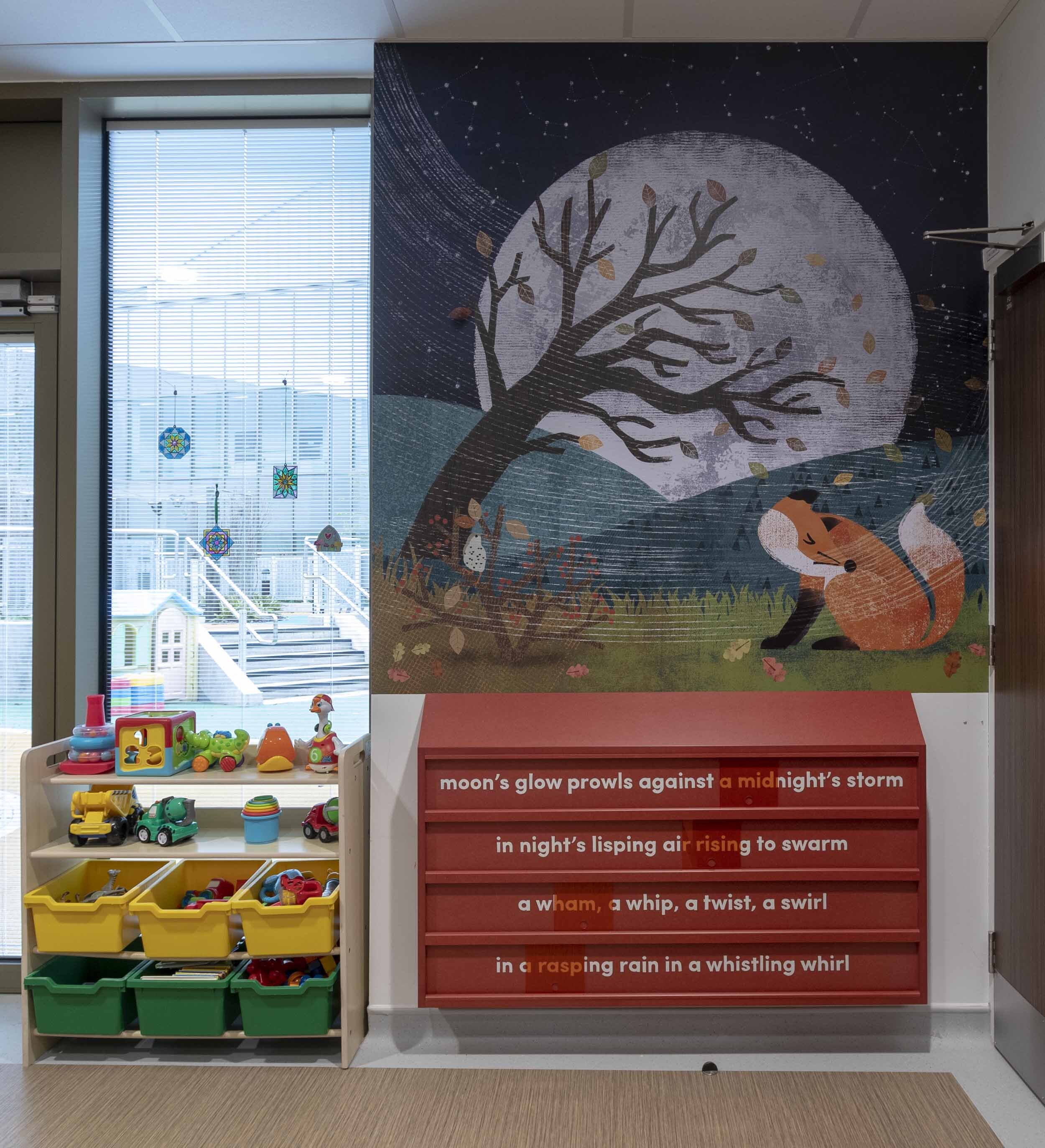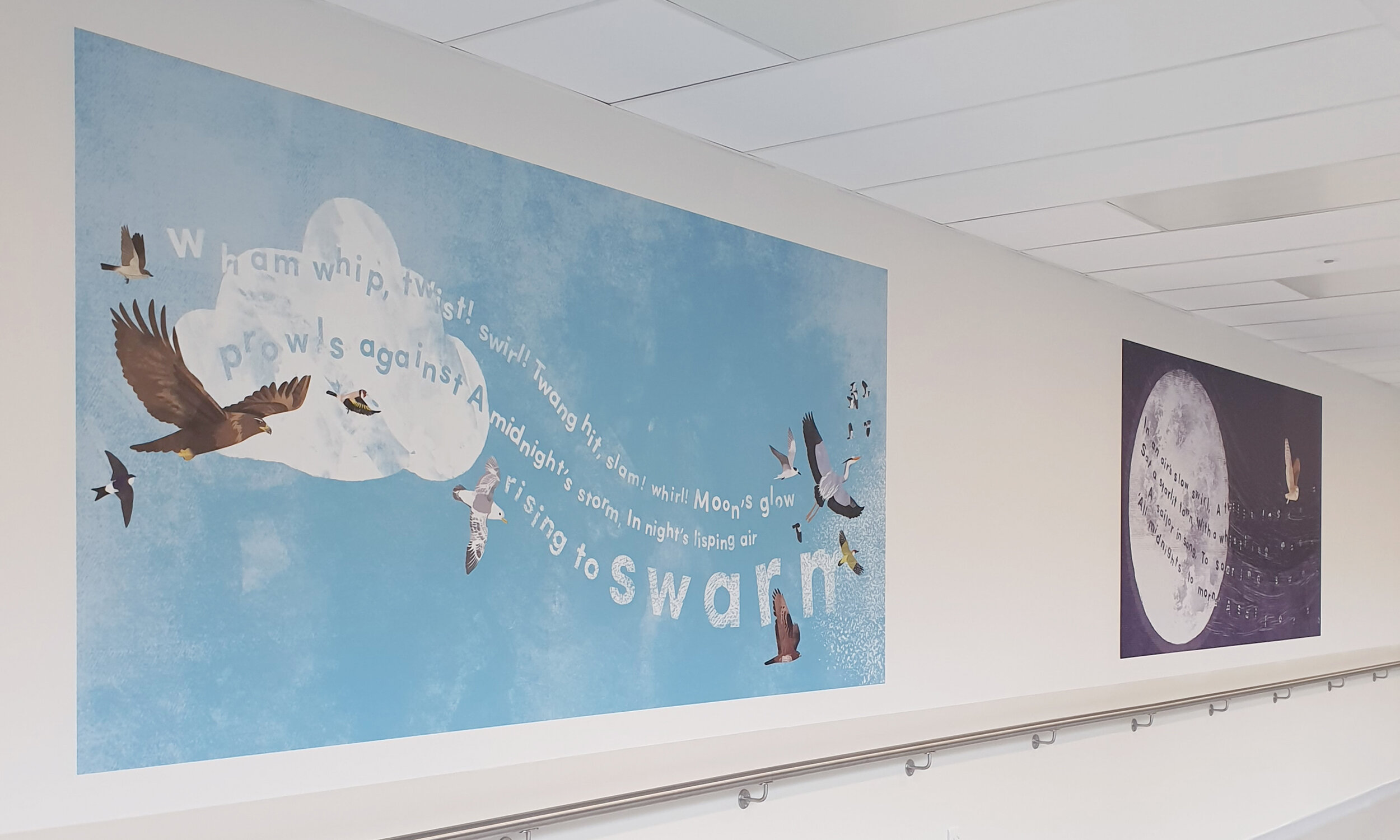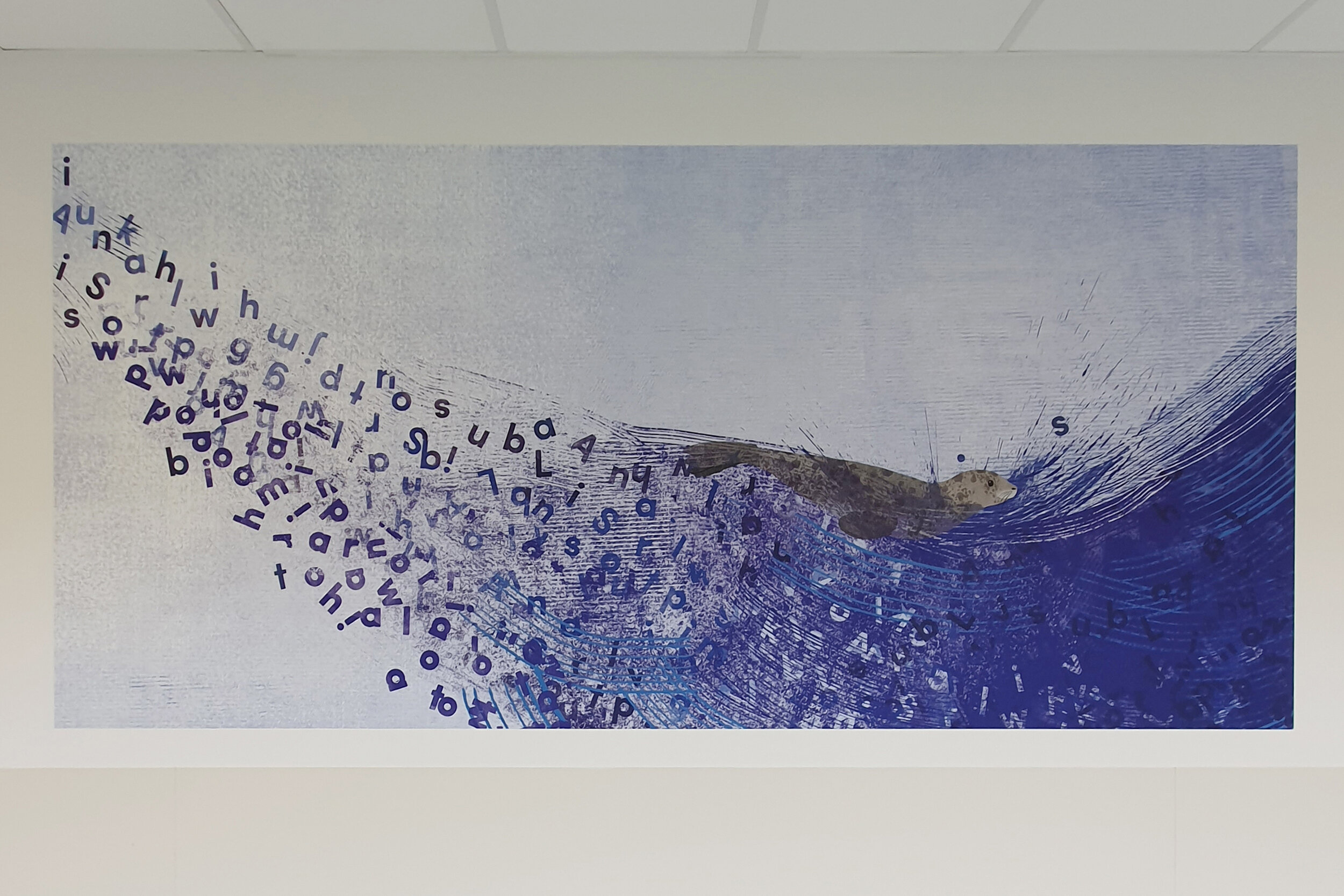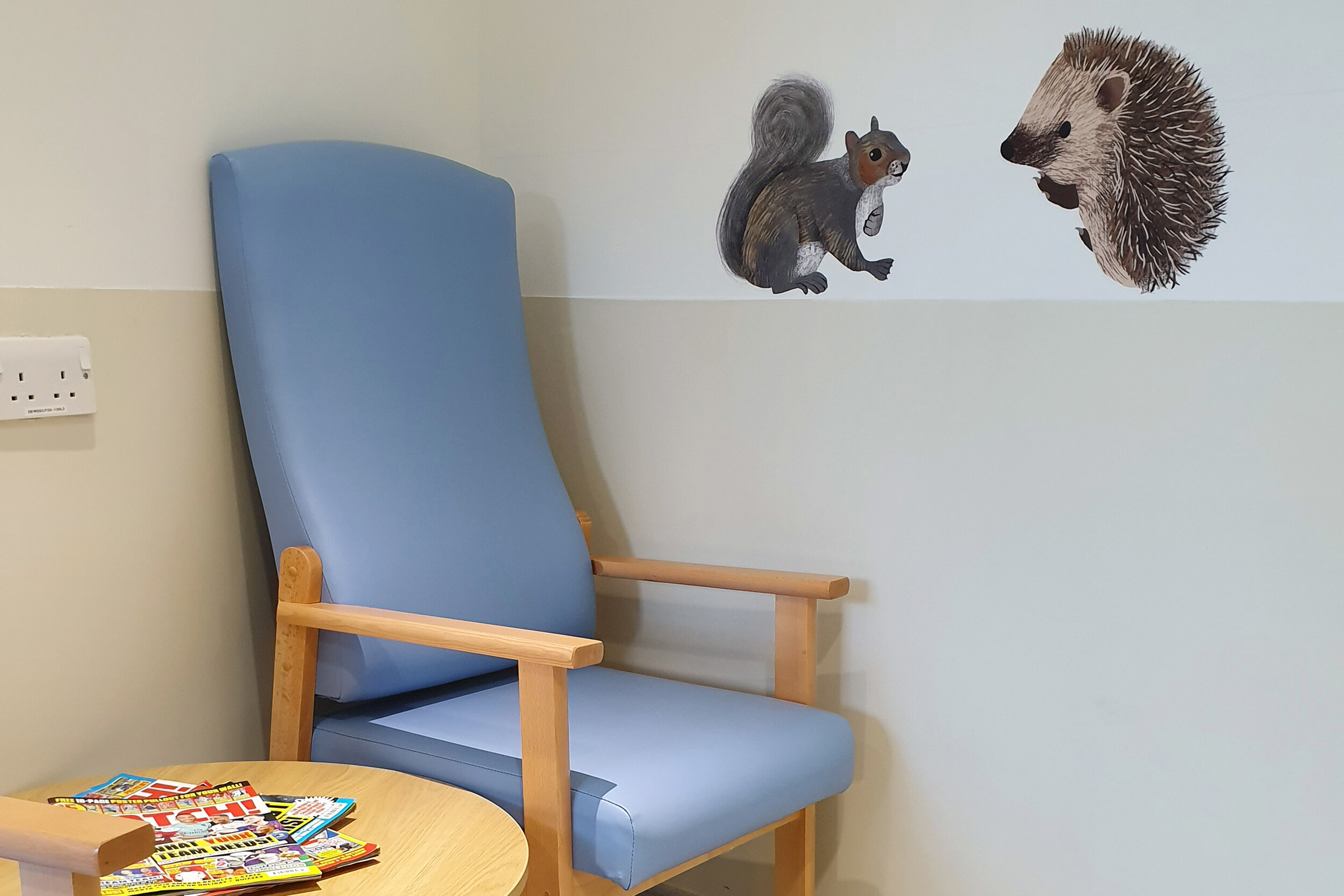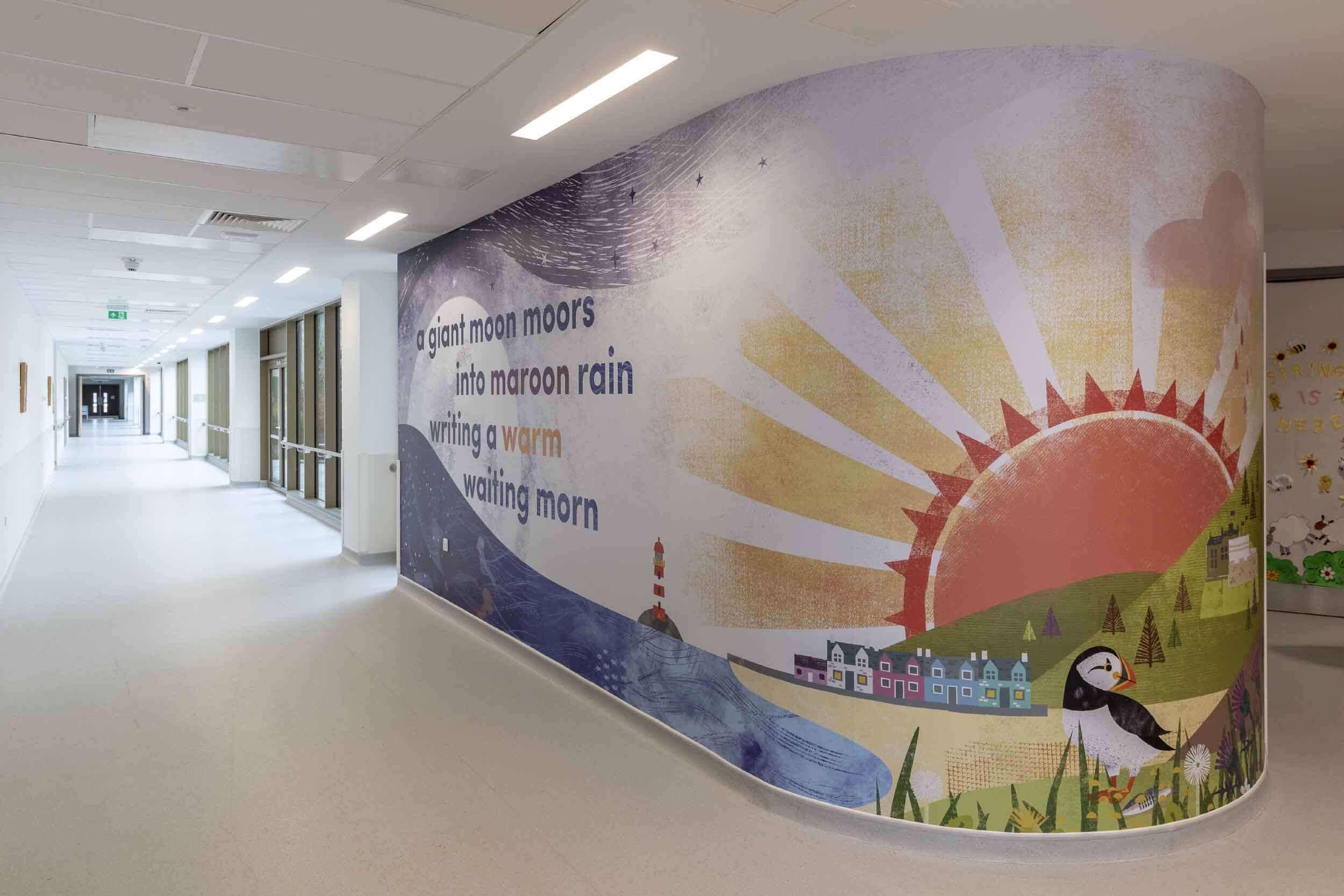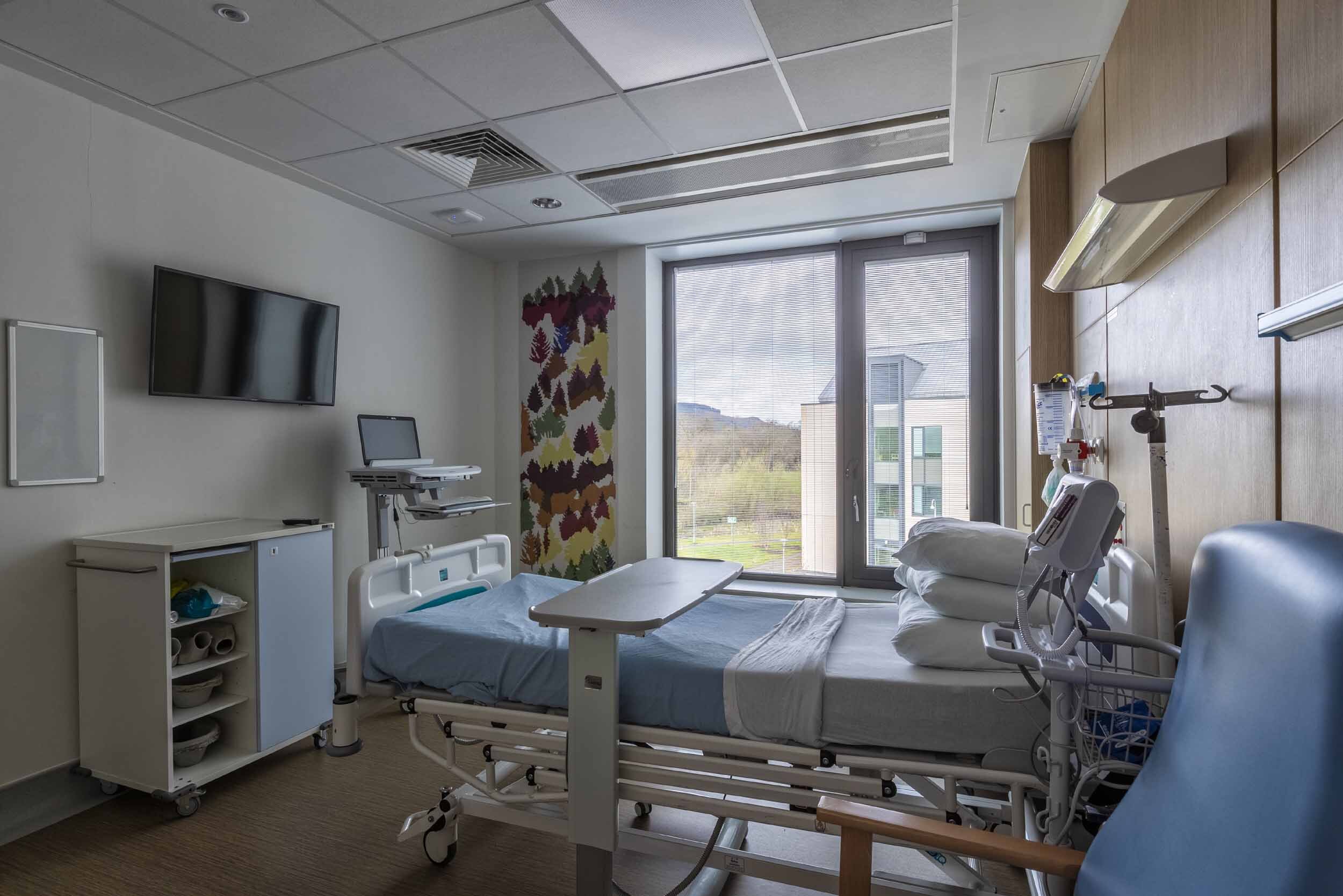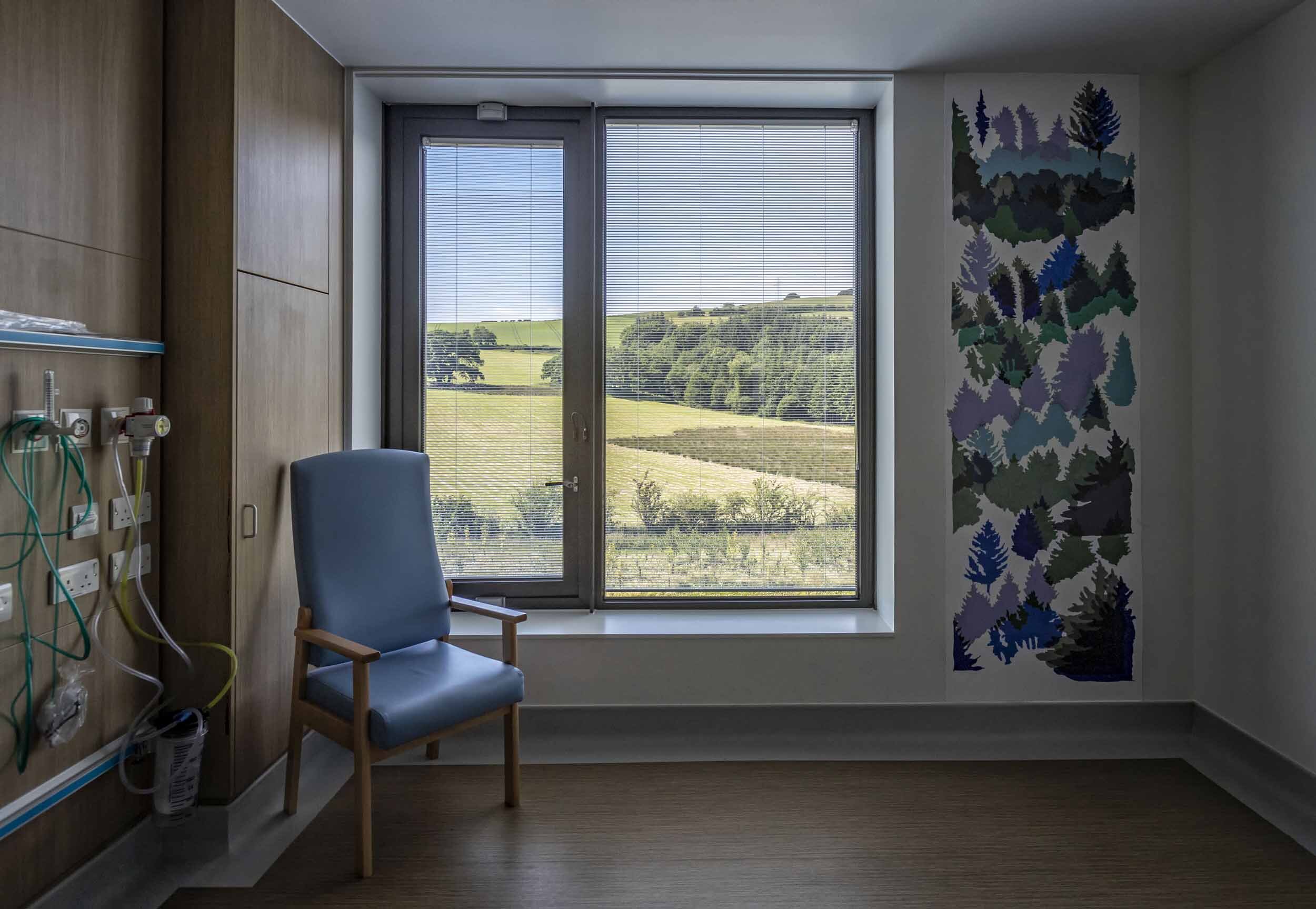Dumfries And Galloway Royal Infirmary
Client: NHS Dumfries and Galloway
2019
Hospitals are redolent with stories – the stories we bring with us, the stories we tell in the hospital and the stories we take away with us when we leave.
Over the last four years, we have delivered a range of art and therapeutic design for the new hospital building in on our art strategy ‘All Our Stories’ through our sister company Wide Open. Artists and designers worked throughout the building to enhance the patient experience focusing on public reception, waiting areas, corridors and sensitive spaces including bedrooms.
Desks & Screens
Liz Myhill was commissioned to create botanically themed designs for reception desks and glass screens across the hospital. Following consultation sessions with staff and community groups, Liz produced designs to represent upland, meadow, coastal, forest and underwater habitats, reflecting the Dumfries & Galloway region. Linocuts were created for each individual element of her designs, which were then digitised before being printed directly on to glass.
Sensitive Spaces
Recognising that some of the very best things and most difficult things in life occur in hospitals, this project has focussed on enhancing the environment of ‘sensitive spaces’ within the hospital to support the range of experiences for staff, volunteers, patients and visitors. Artists Jo Hodges and Robbie Coleman were commissioned to lead the project and develop a conceptual and aesthetic framework through which to create a calming and caring environment. The artists worked closely with Dawn Allen, Spiritual Care lead of NHS Dumfries and Galloway, to explore issues concerned with challenging conversations, end of life and remembrance with hospital staff and the wider community.
Artists Emma Varley, Linda Mallett, Jim Buchanan and designers Richardson and Brown were commissioned to develop art and design enhancements across twelve departments based on the theme of ‘Bringing the Outside In: The Nature of Dumfries and Galloway.’
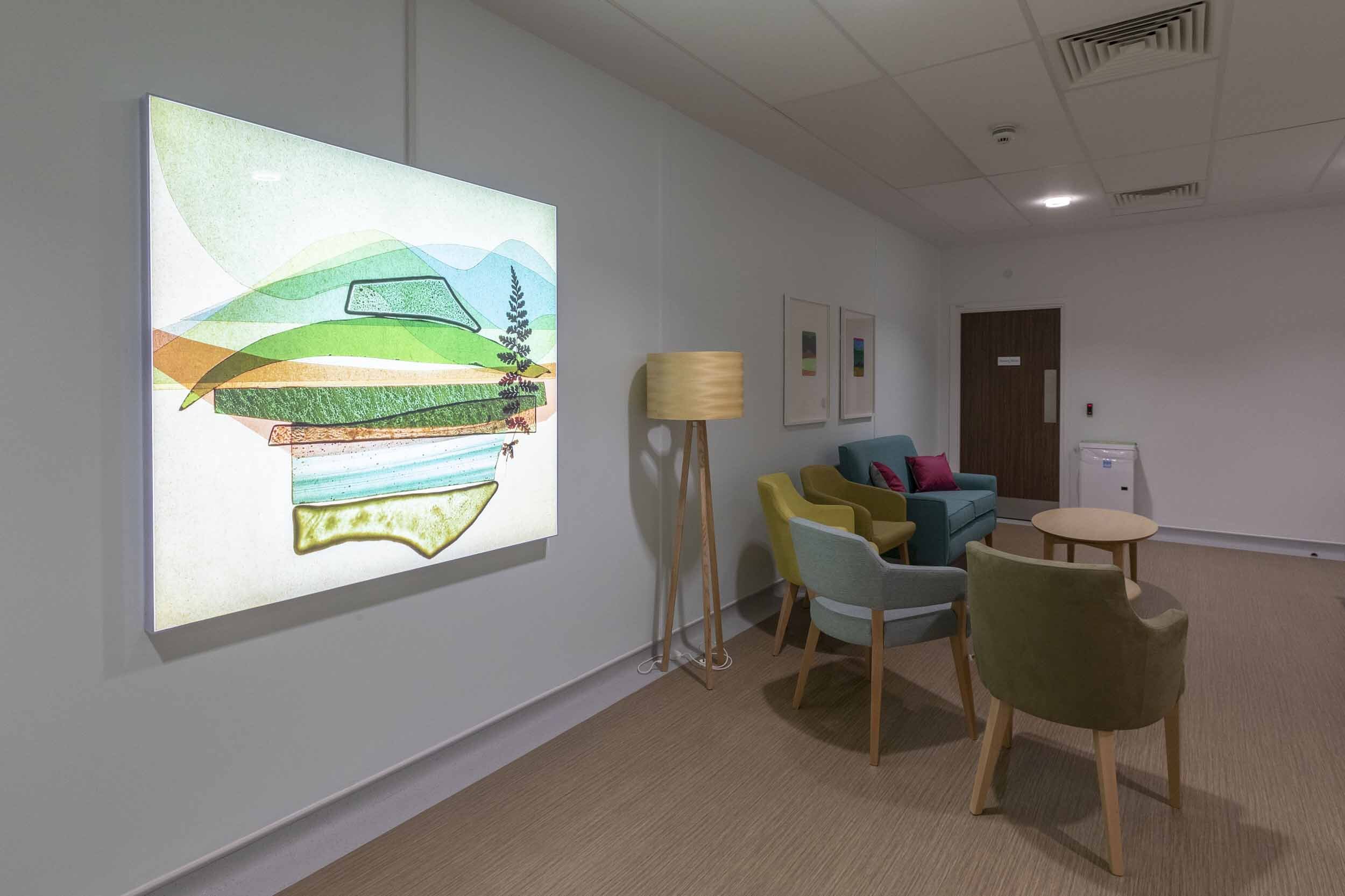
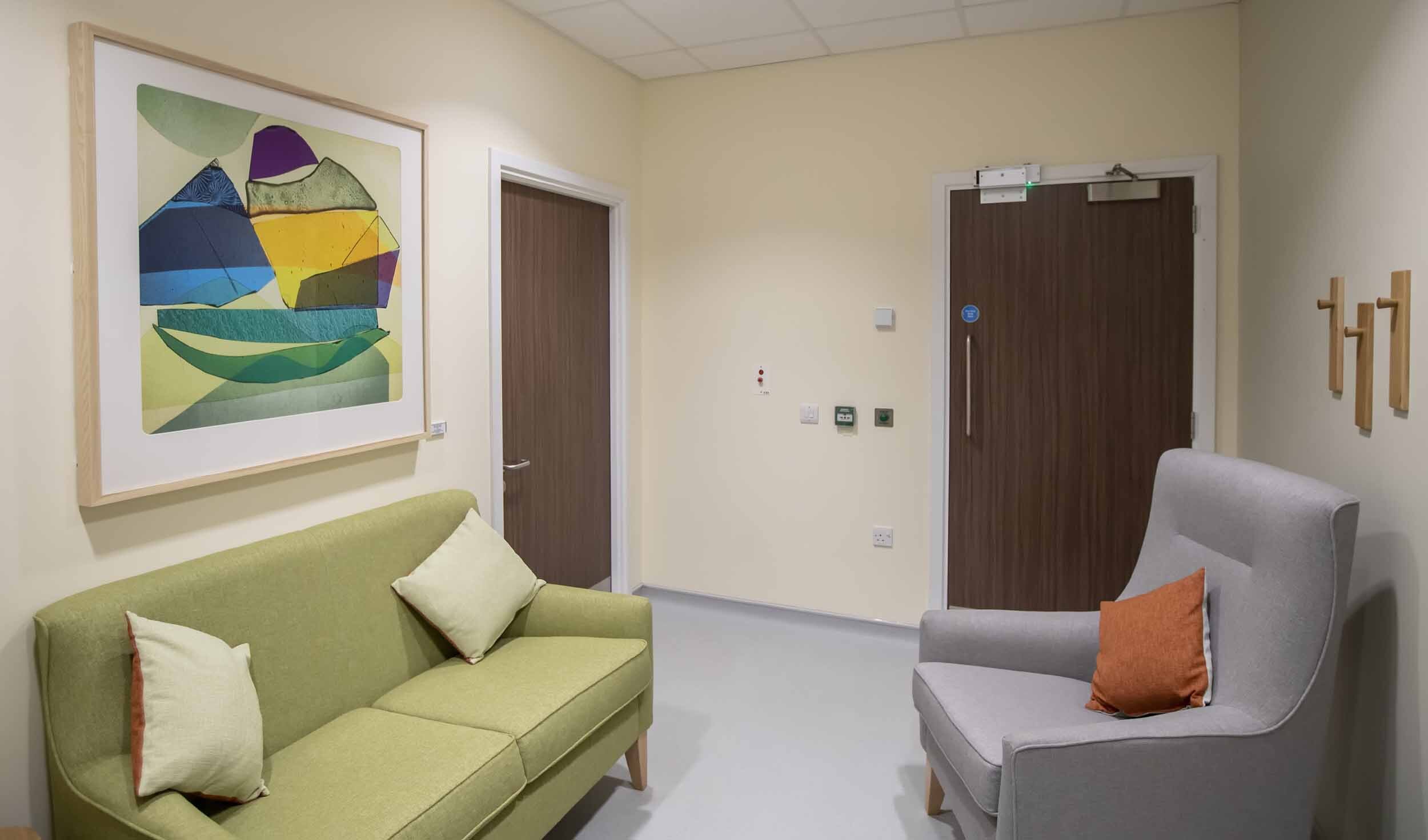
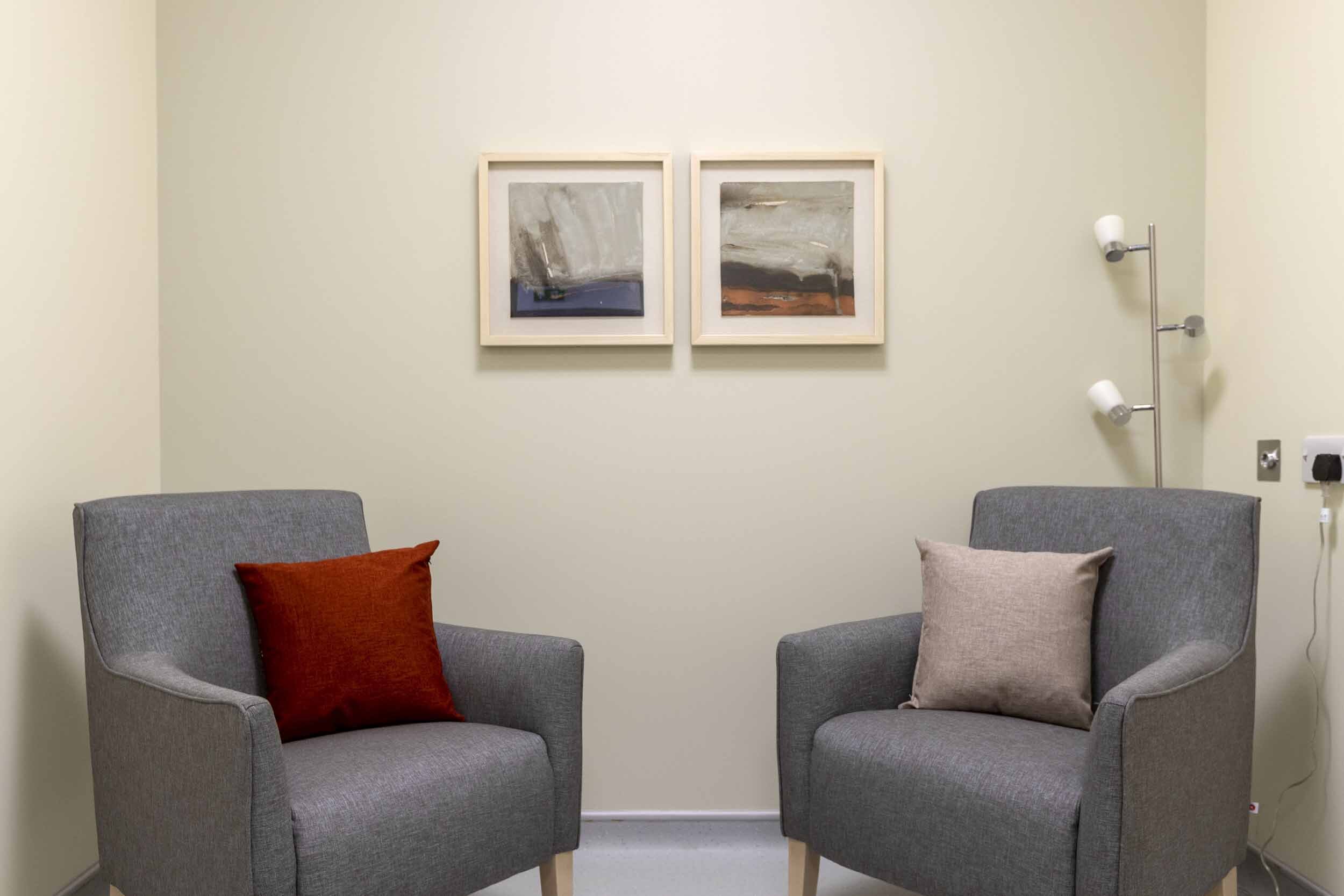
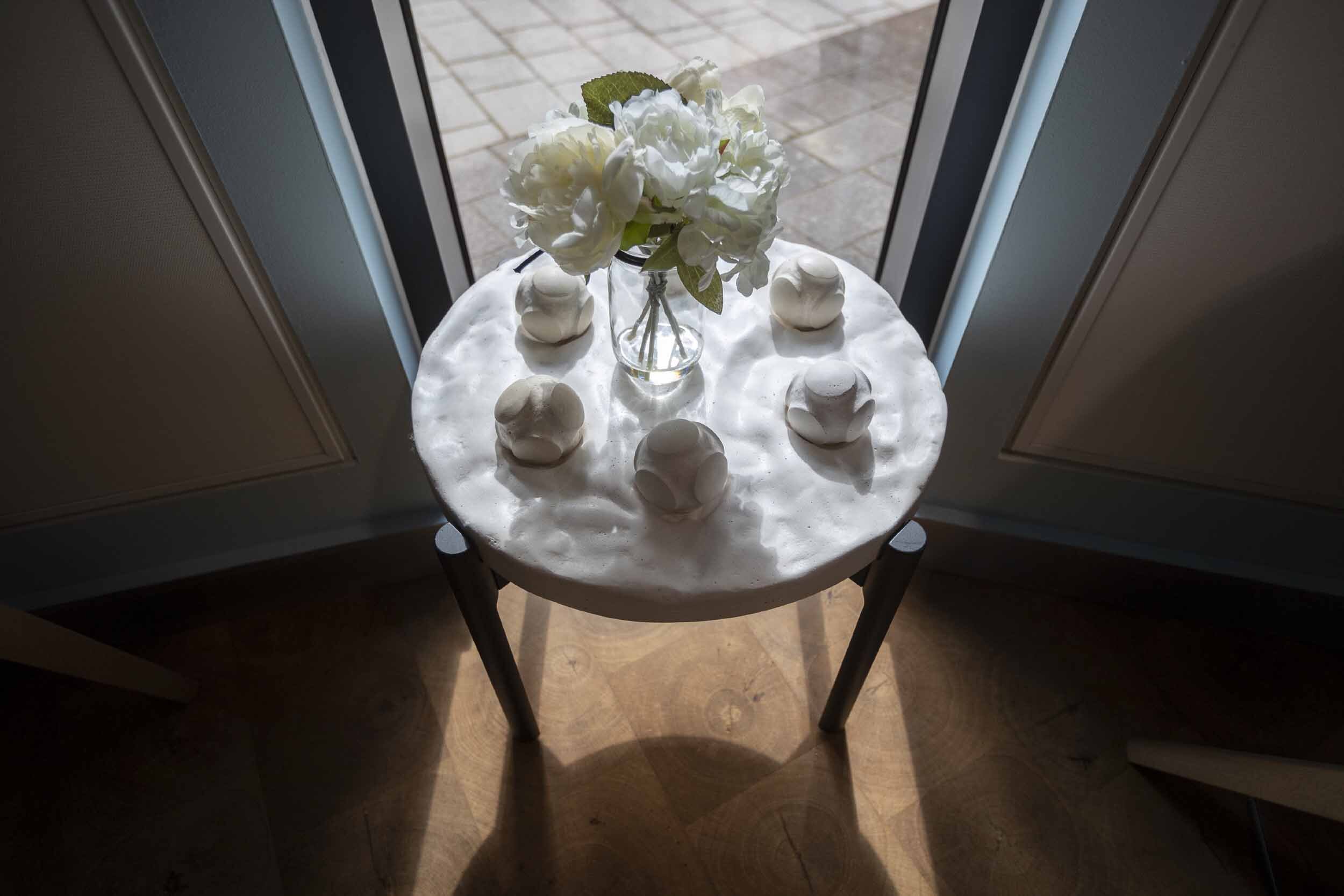
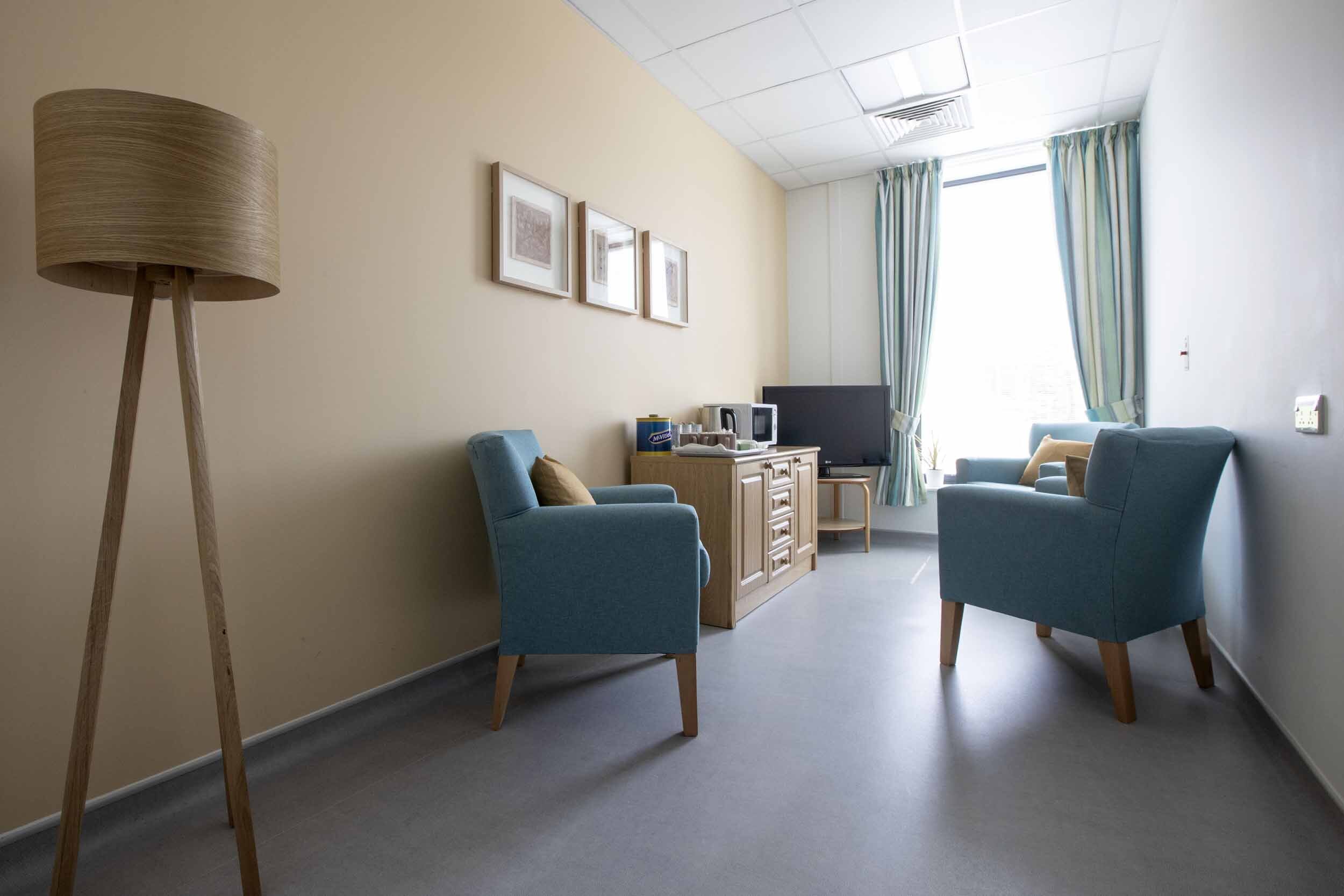
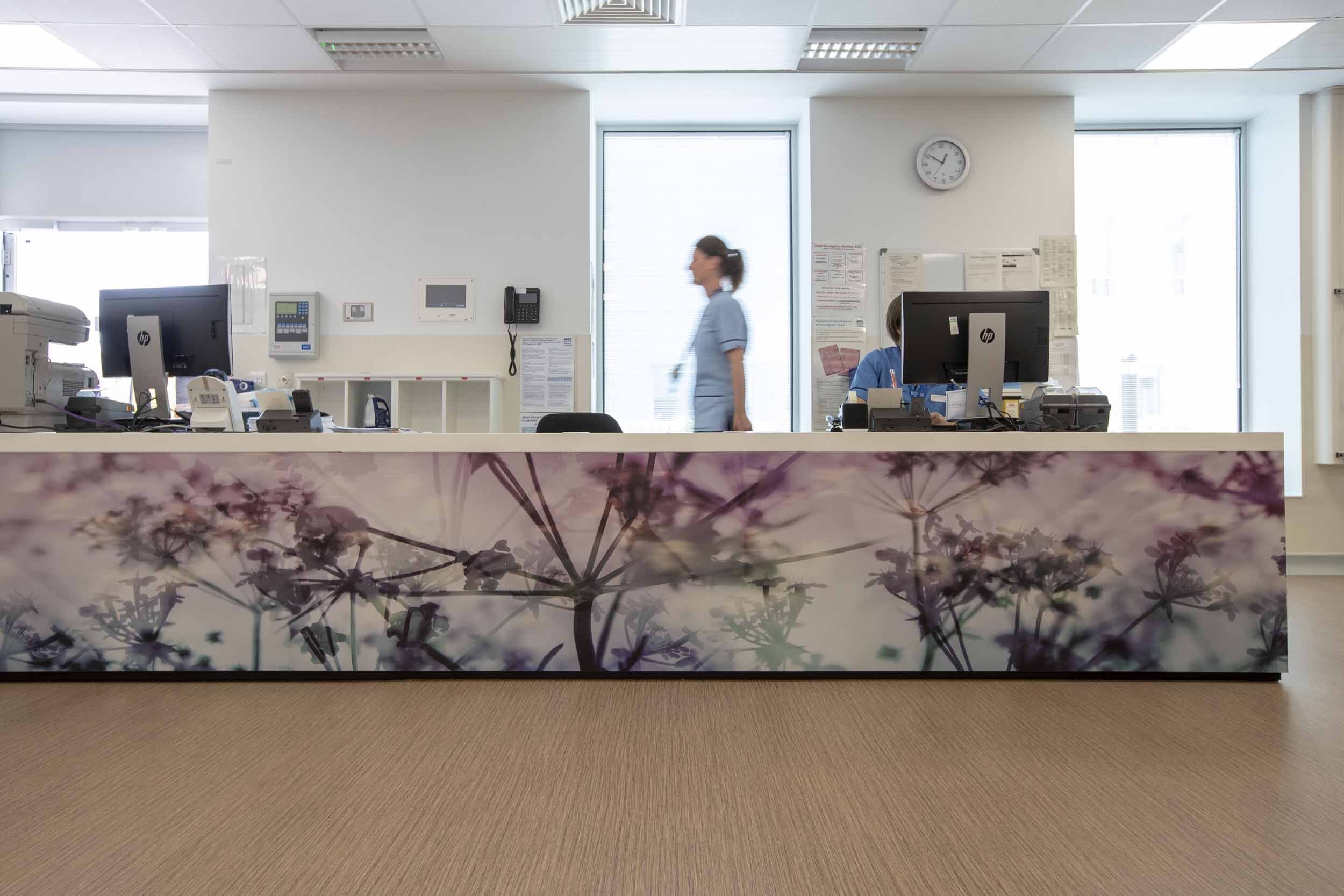
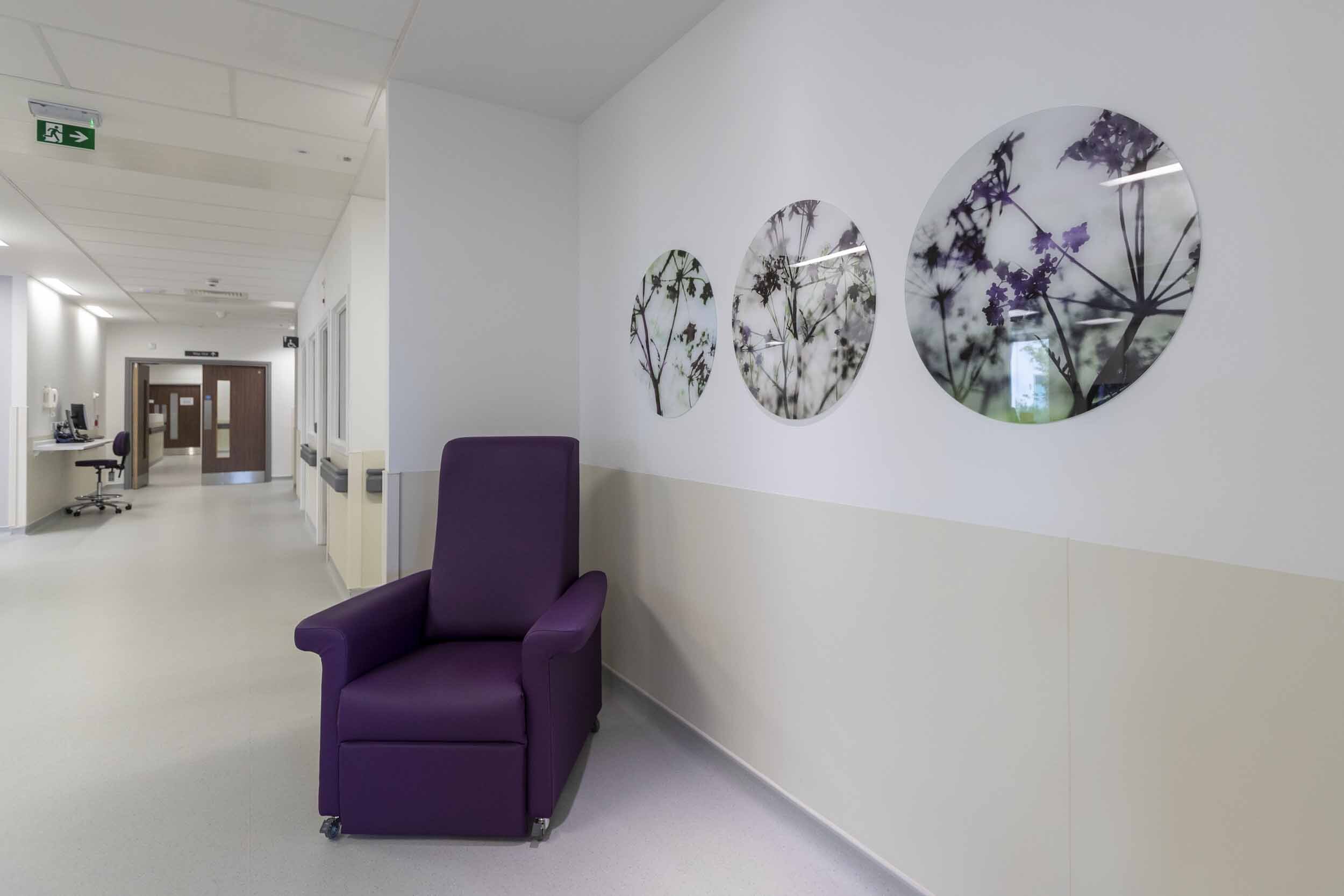
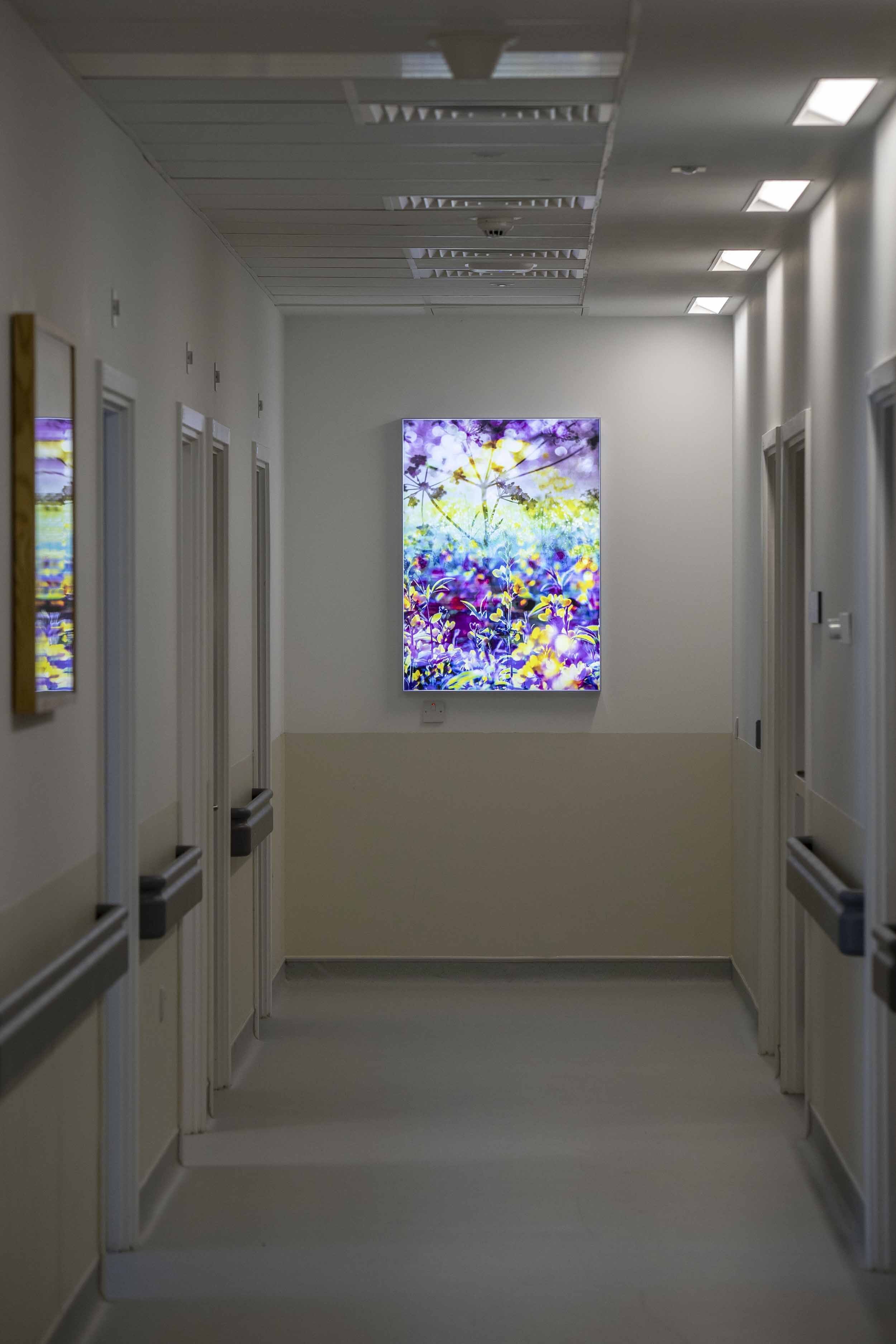
Design partnership Richardson & Brown based in Moniaive have created uplifting and calming designs based on wild flowers for Oncology.


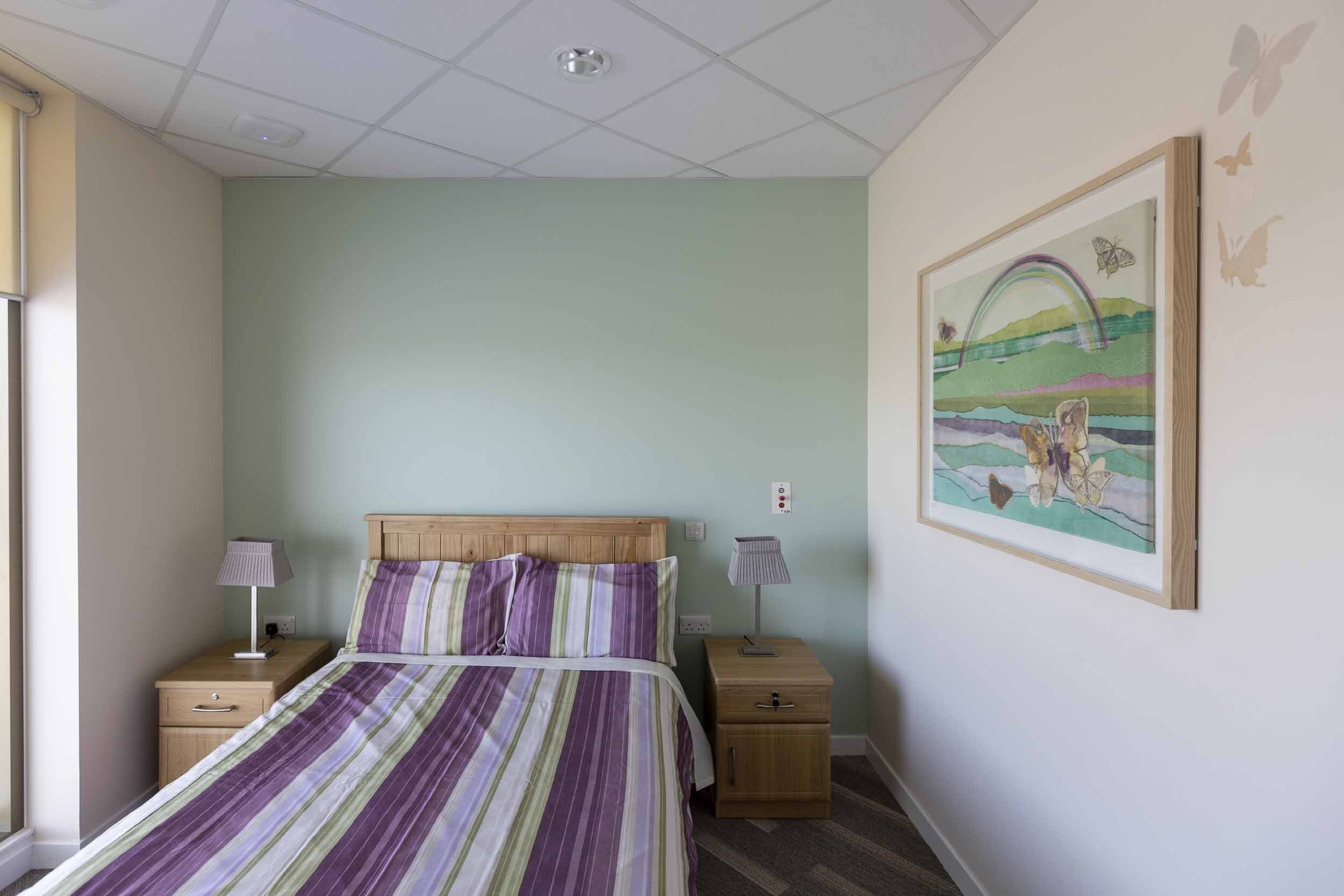

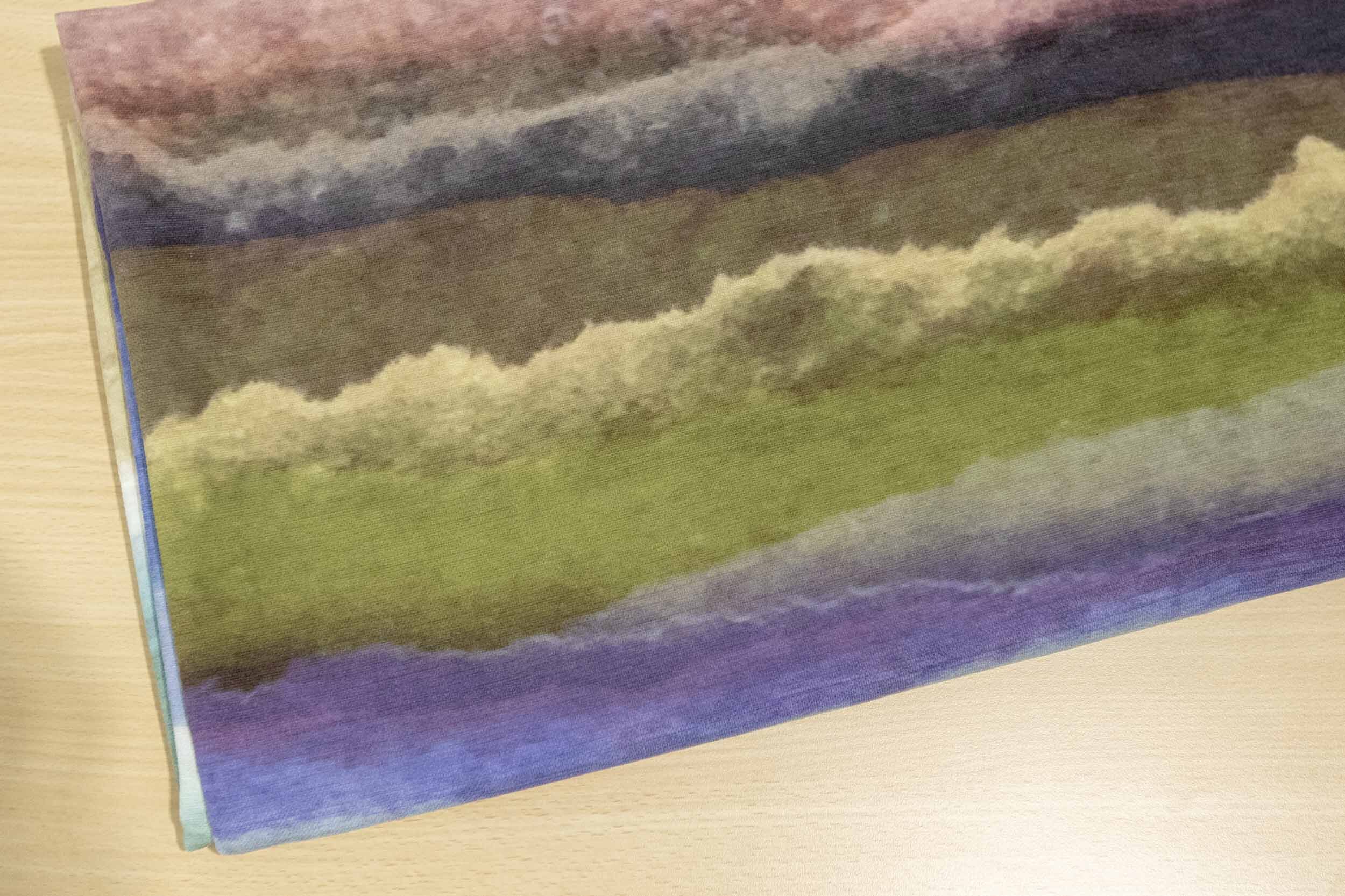
Emma Varley
The hills,rivers & lochs of the region have inspired Emma’s work for Sensitive Spaces. Consultation with staff focused around the discussion of postcards; of favourite places, specifically nature in constant flux – the local landscape, ever changing light, colour and texture.
In the mortuary and bereavement suite, design ideas developed around stained glass and its ability to evoke reverence through the intensity of projected light as colour. Emma created a series of light collages using coloured glass, translucent papers and natural objects. Bier covers were designed for the bereavement suite.
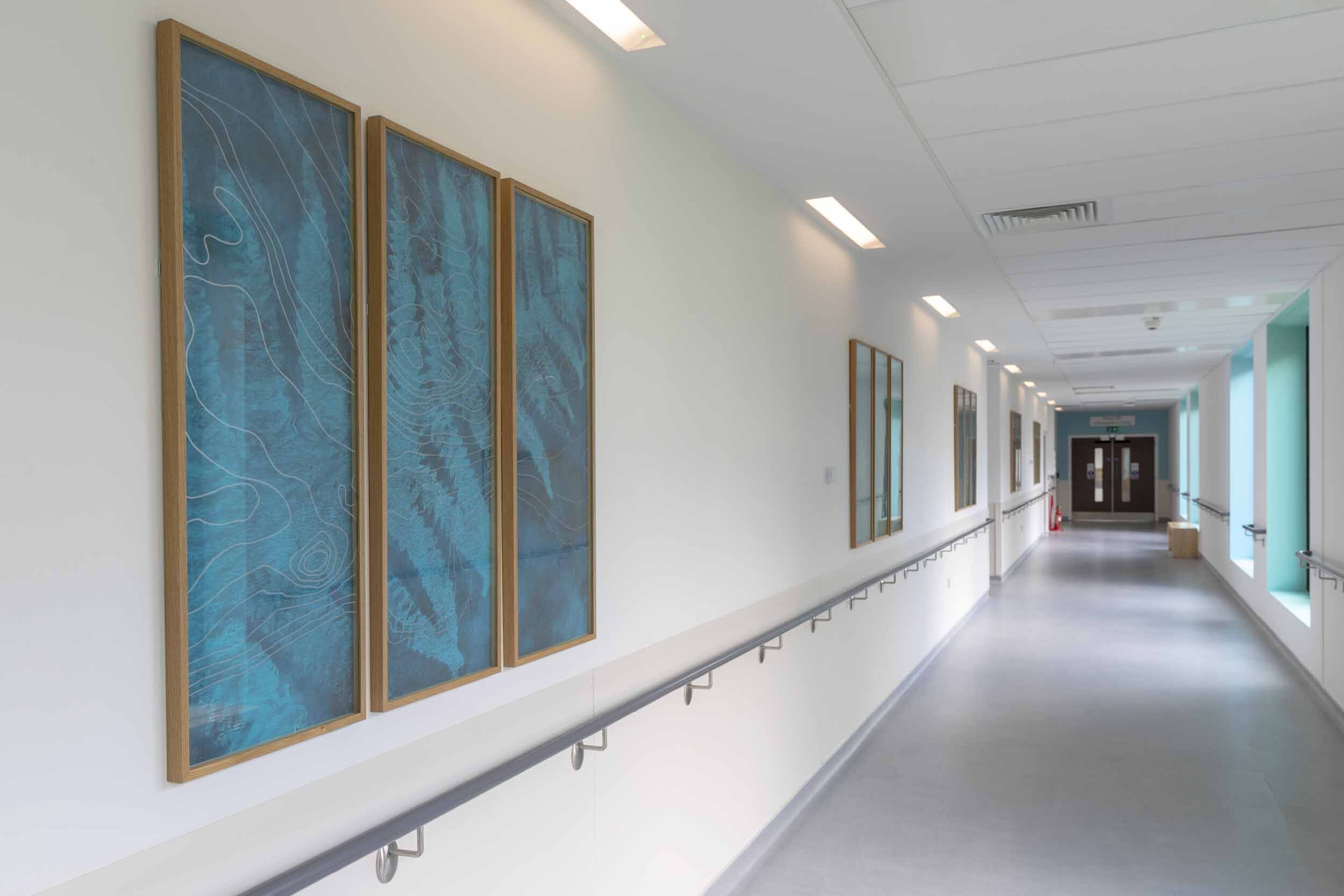
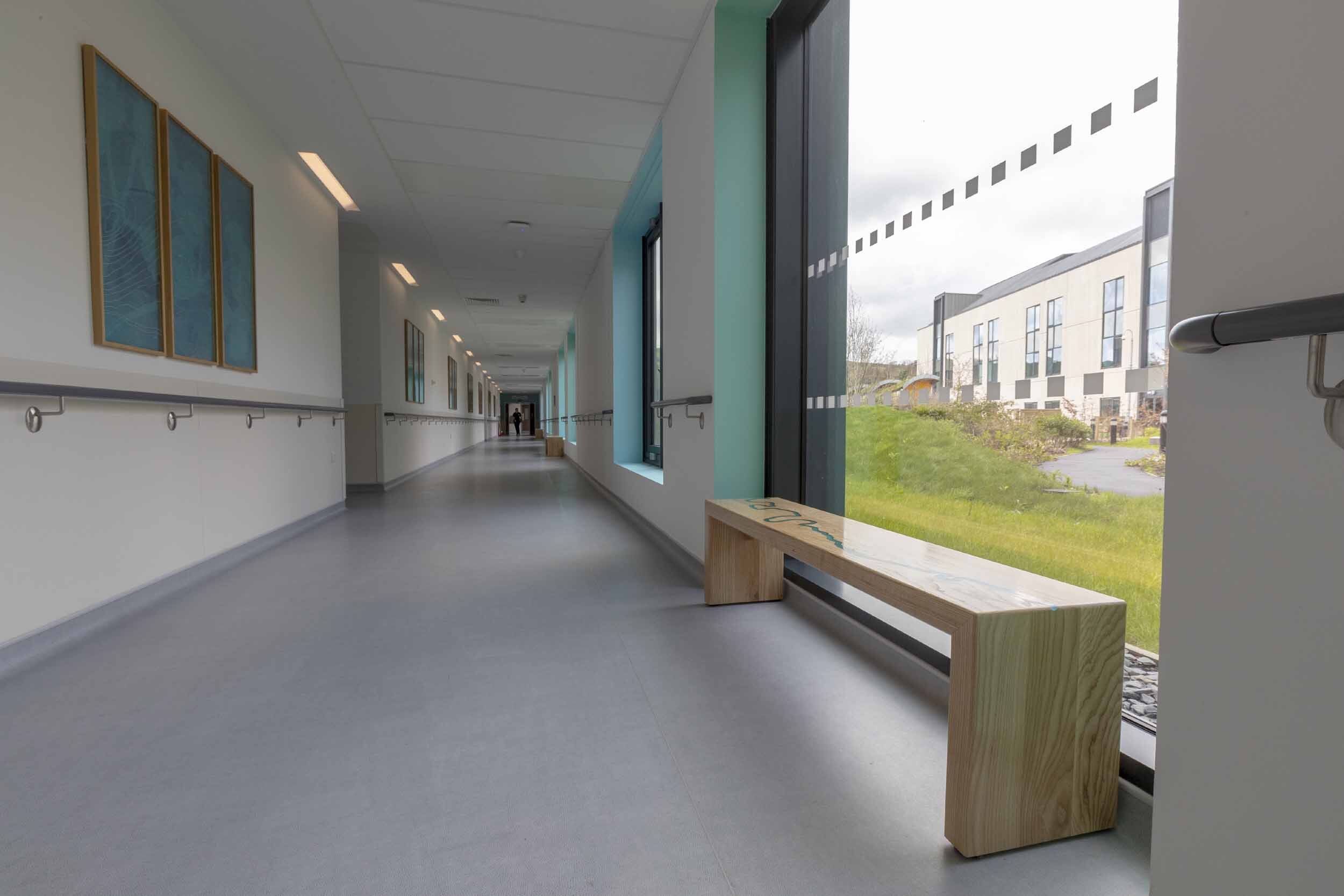
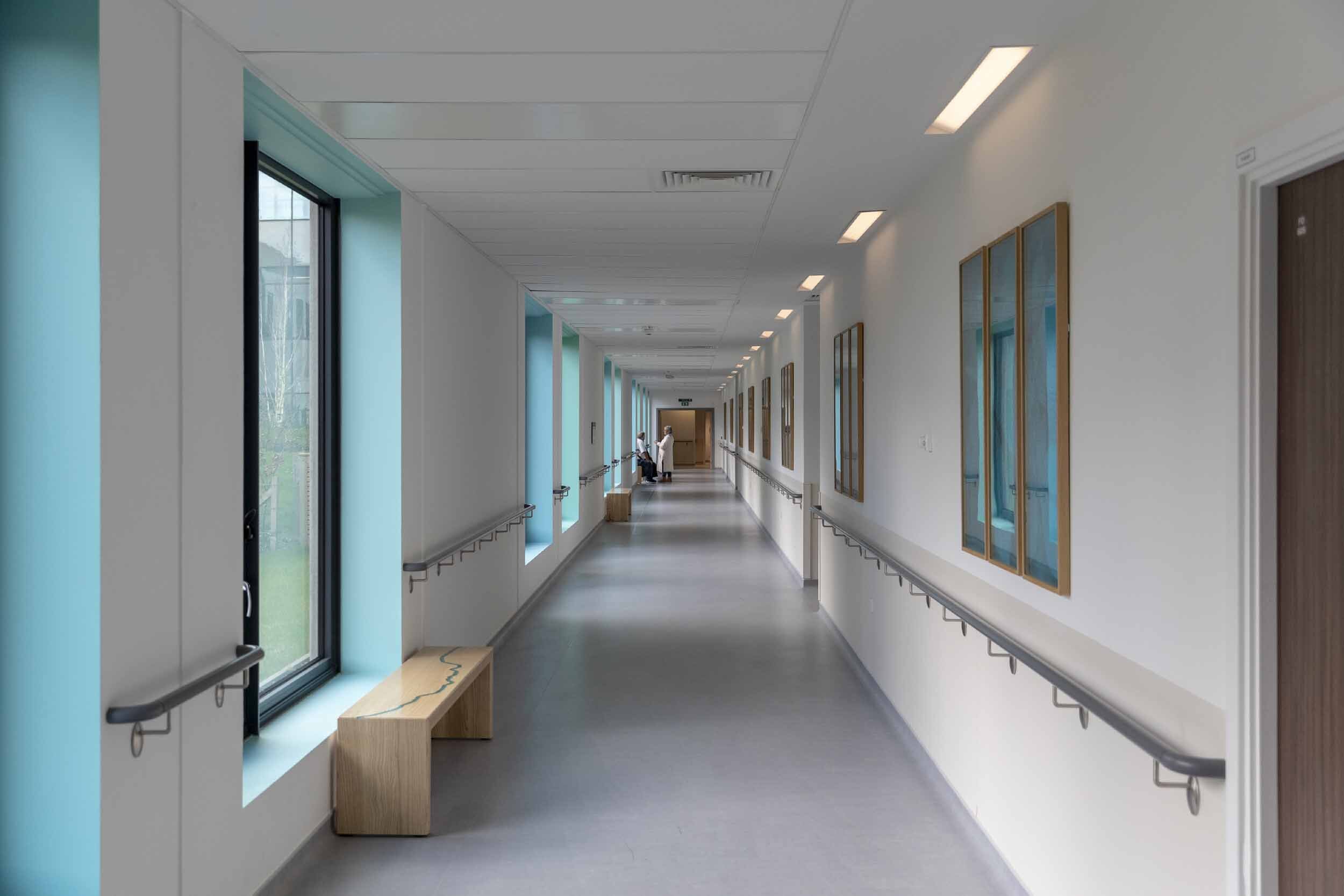
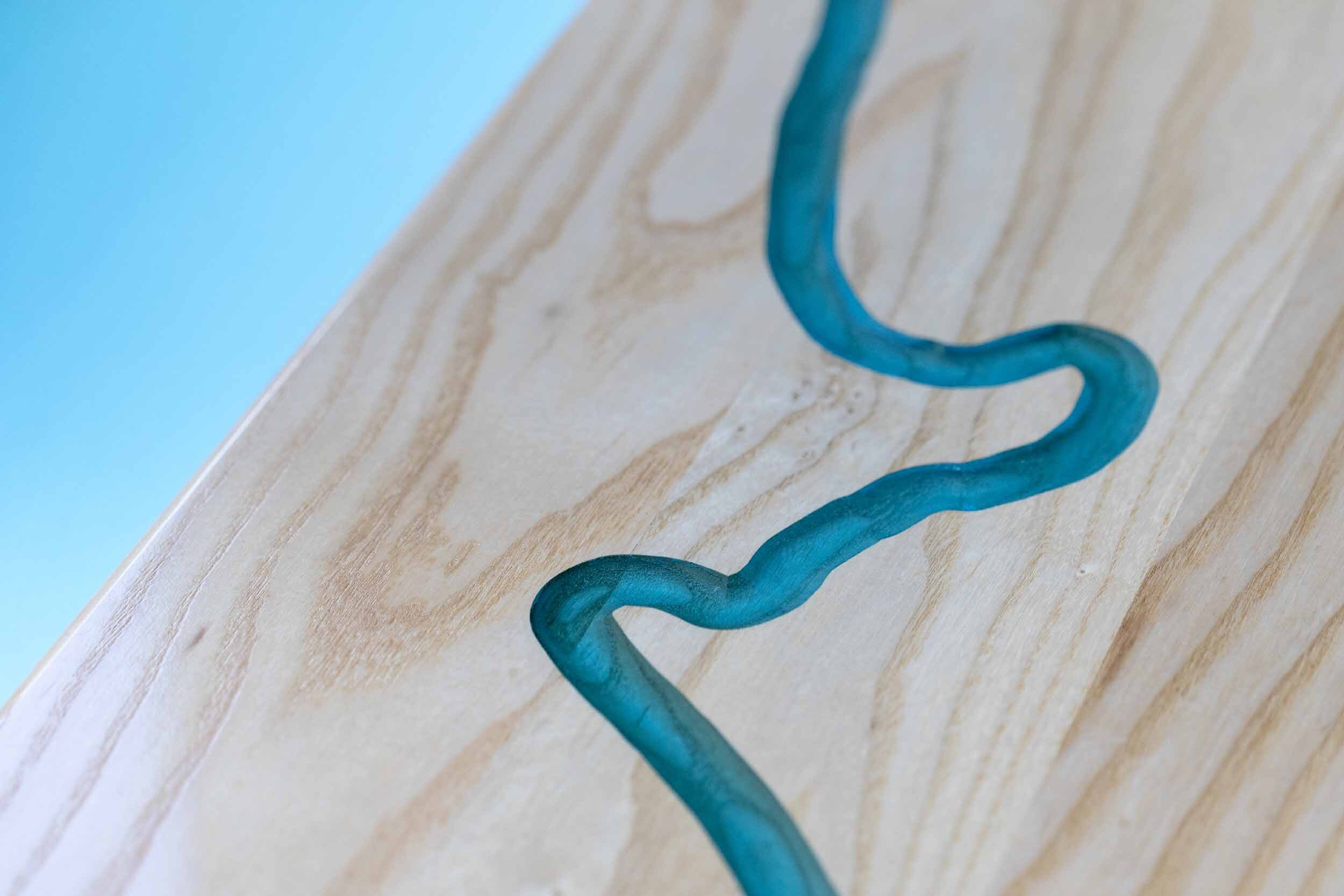
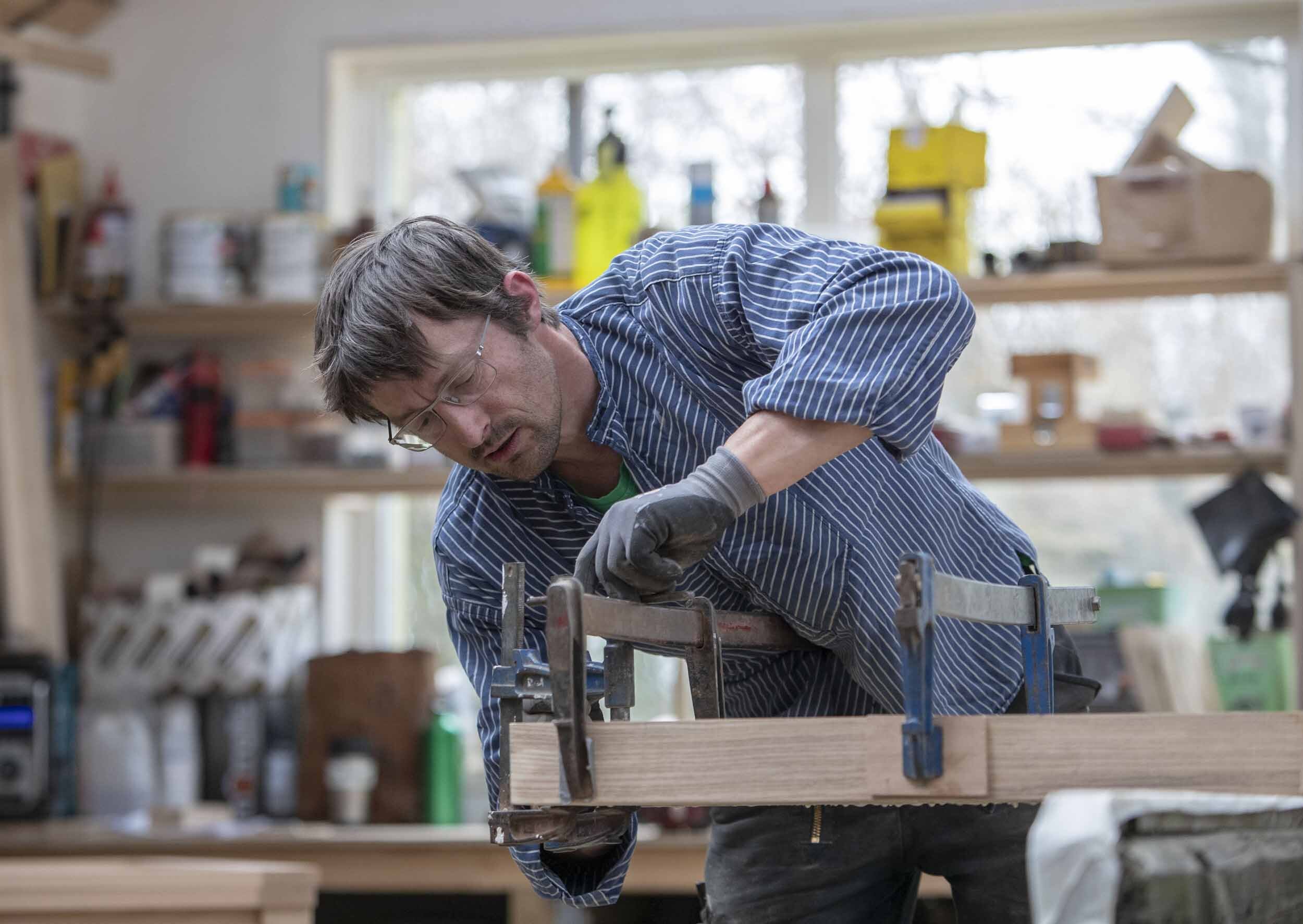
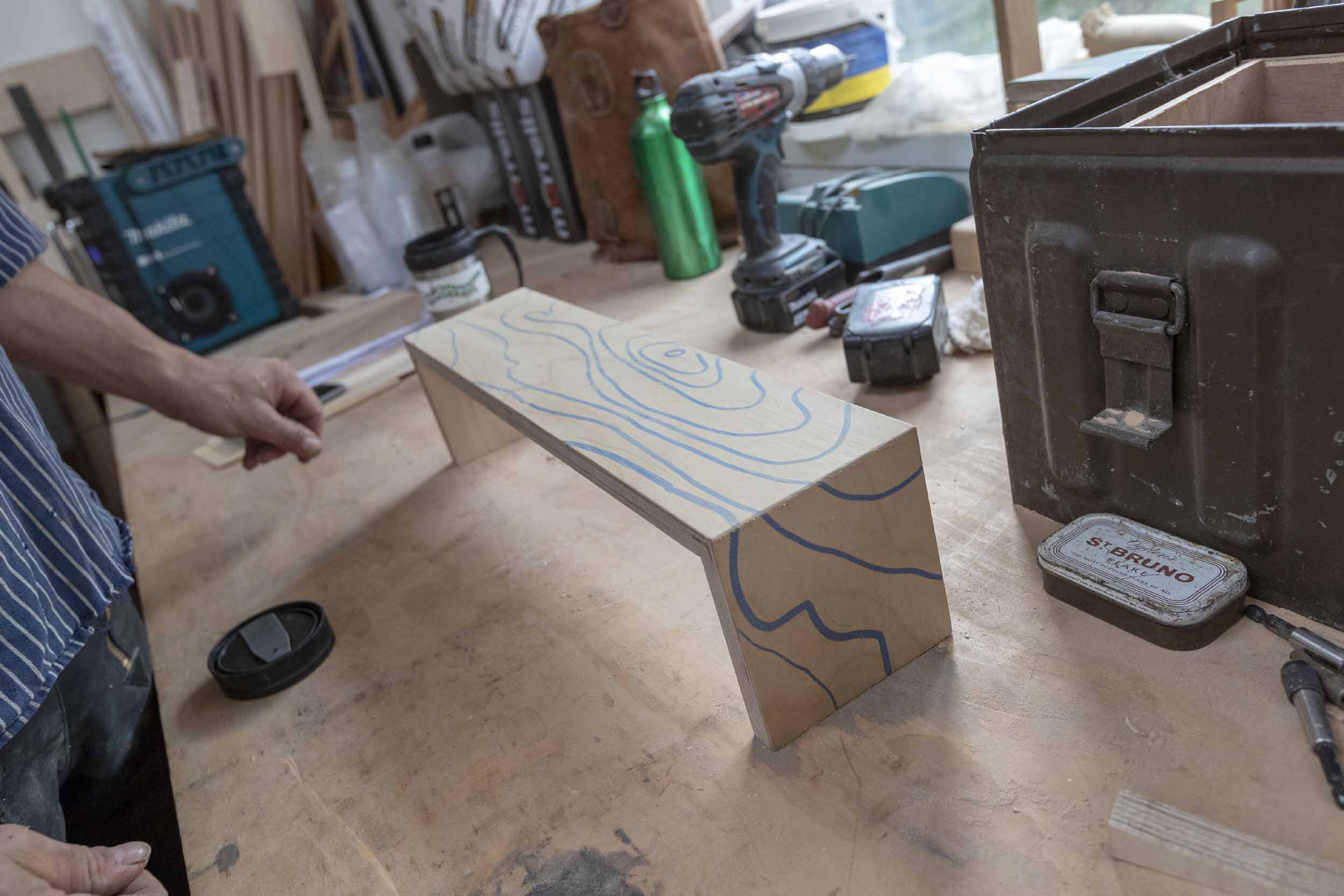
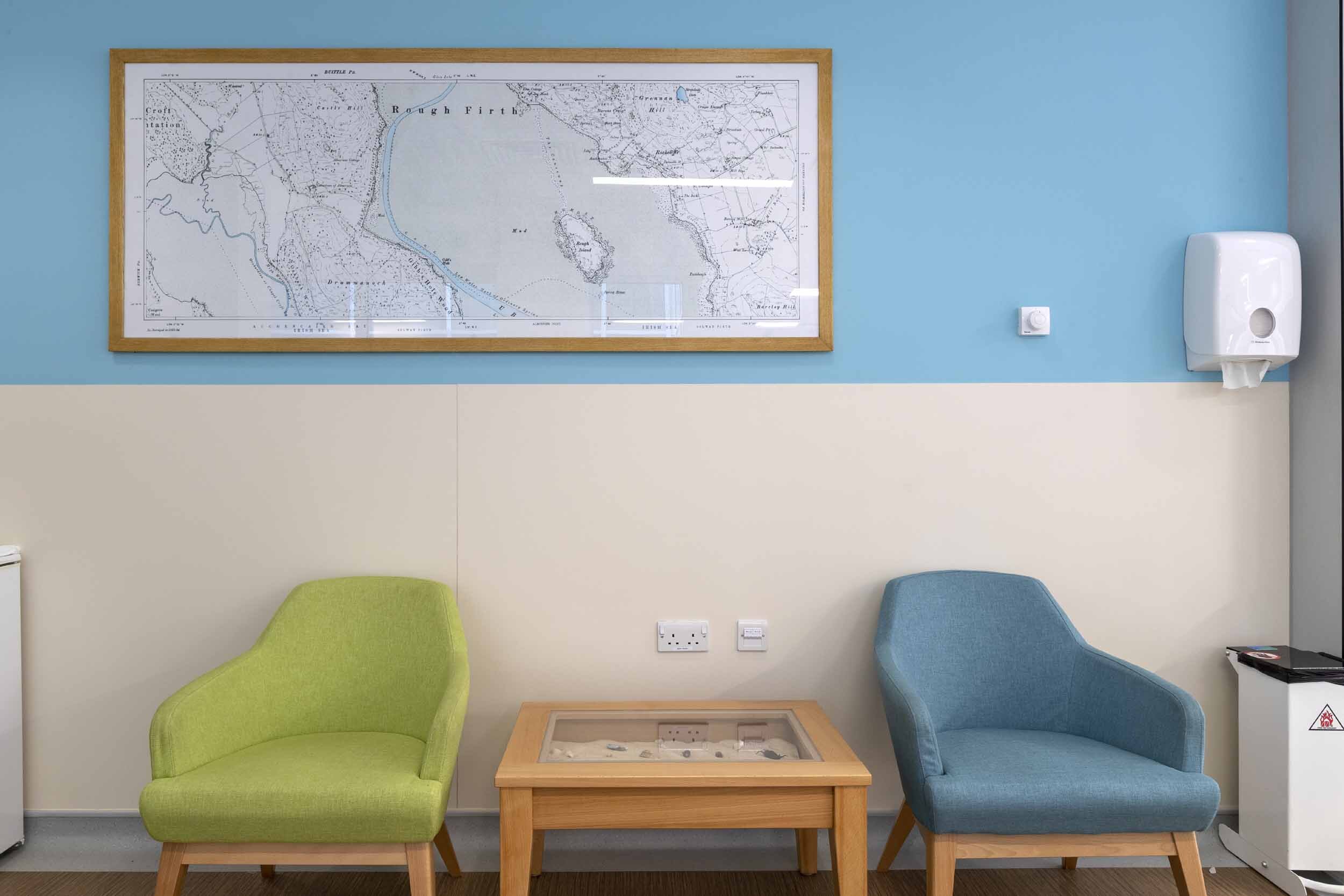

The corridor leading to the Alexander Unit contains a series of triptychs by Robbie Coleman and Jo Hodges using botanical monoprints overlaid with contour lines of the Kippford/Rockcliff coastline. The benches in the corridor were made by local furniture maker Phil Daube and contain an embedded design of the same coastline. Botanical specimens, shells and seaweed were cast in plaster to create the artworks in the relatives rooms. Patients are able to customise the display by choosing from a selection of photographic prints of landscapes of Dumfries and Galloway by photographers Leeming and Paterson, or personalising the frames, with images from home, children’s drawings and cards.
Staying & Waiting
This project seeks to make the inevitable activities of staying and waiting, so characteristic of hospitals, less stressful by creating a patient centred environment focusing on the experience of patients, families and carers as well as staff. The project has been led by Dress for the Weather, a Glasgow-based architectural practice. They recruited a team of three associate artists from the Dumfries & Galloway region who have been deeply involved throughout the project: Katie Anderson, Martin O’Neill and Rory Laycock.
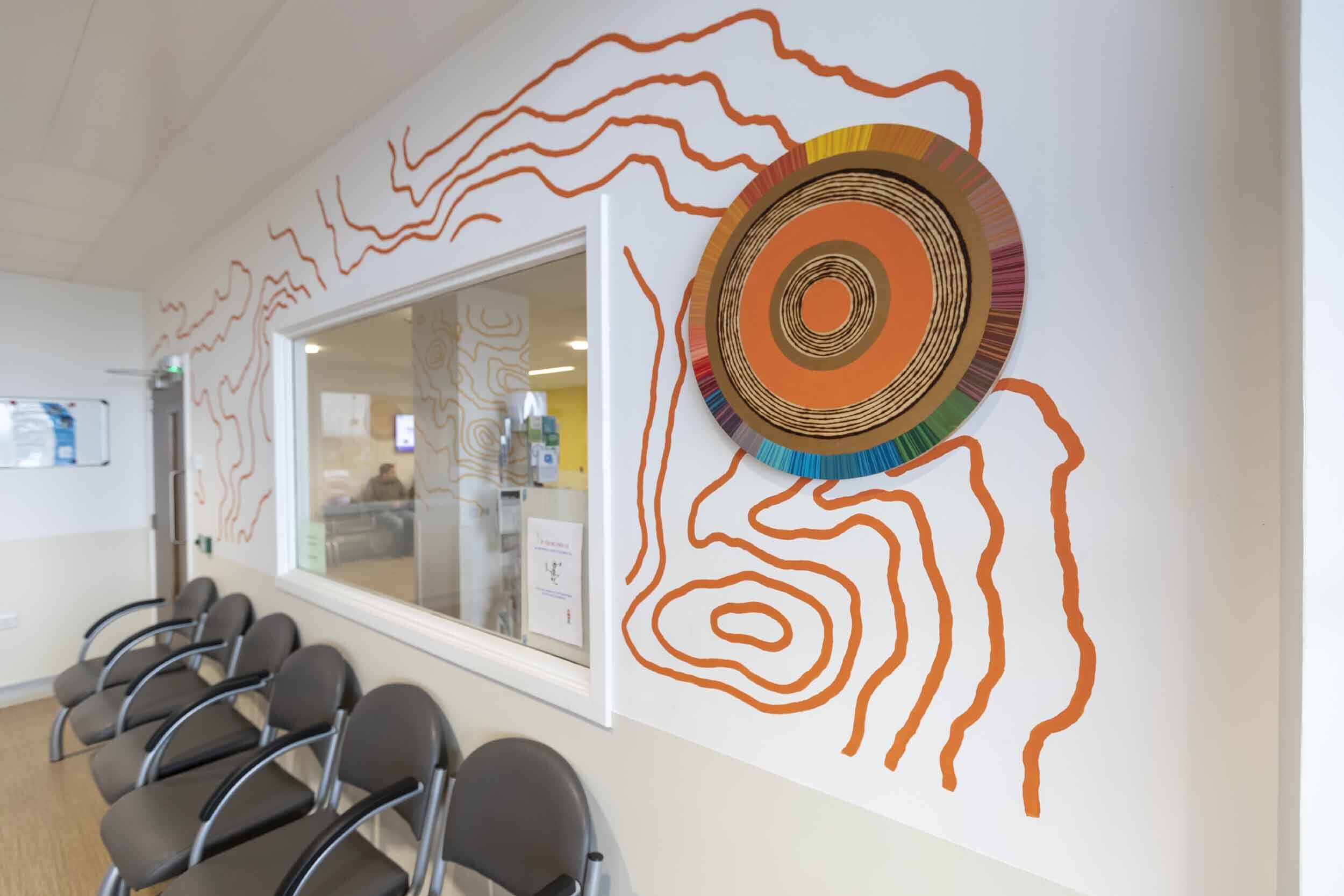
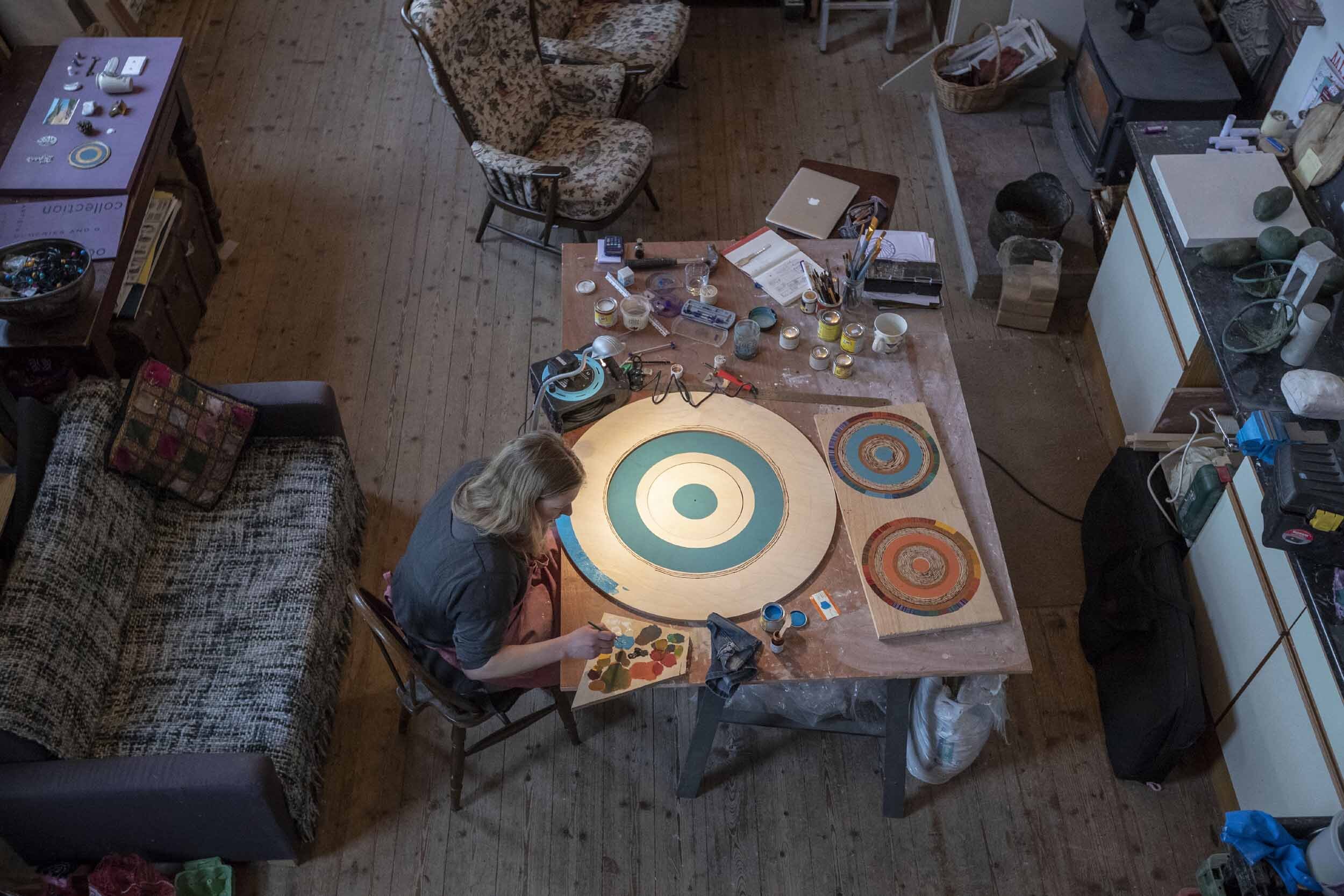
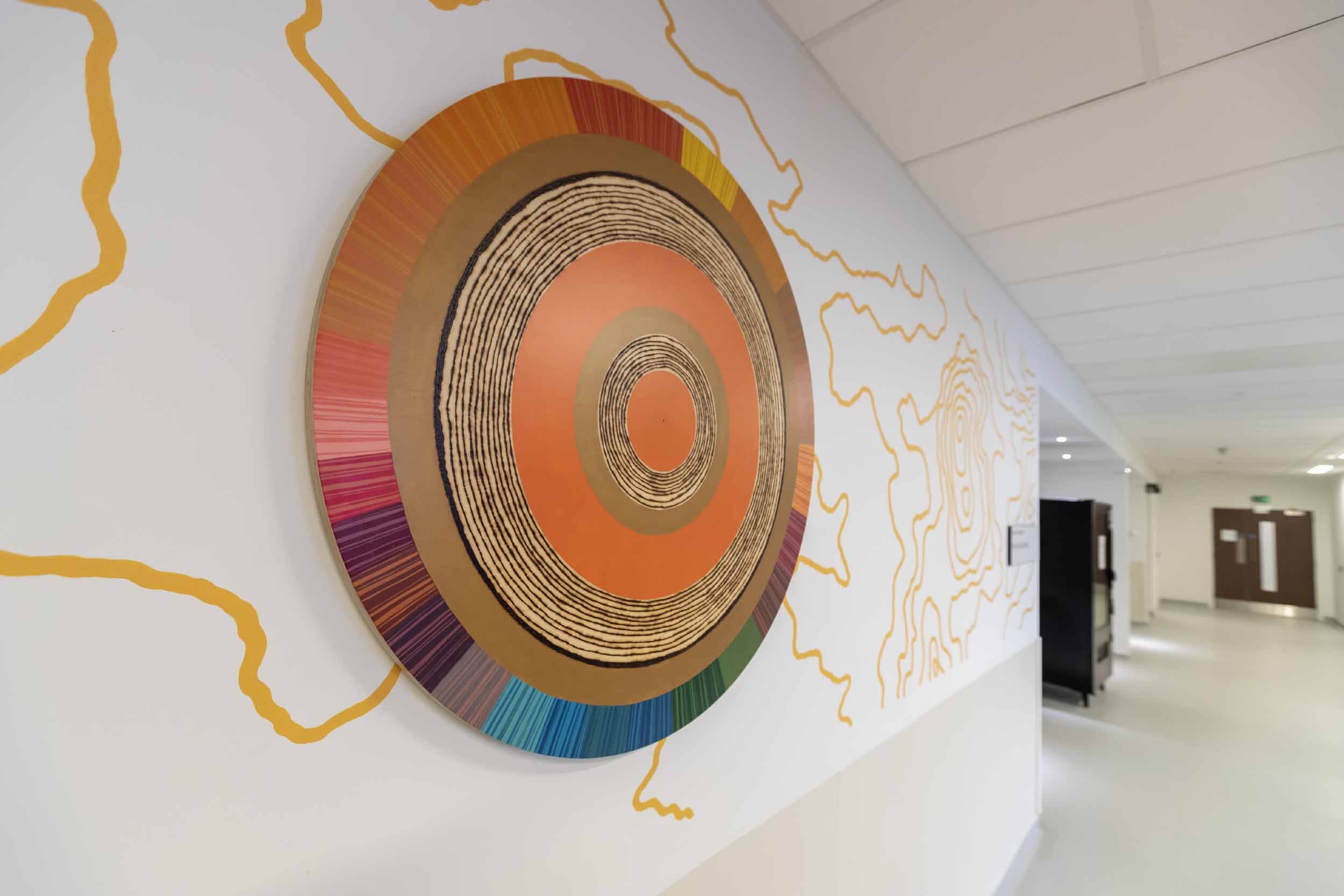
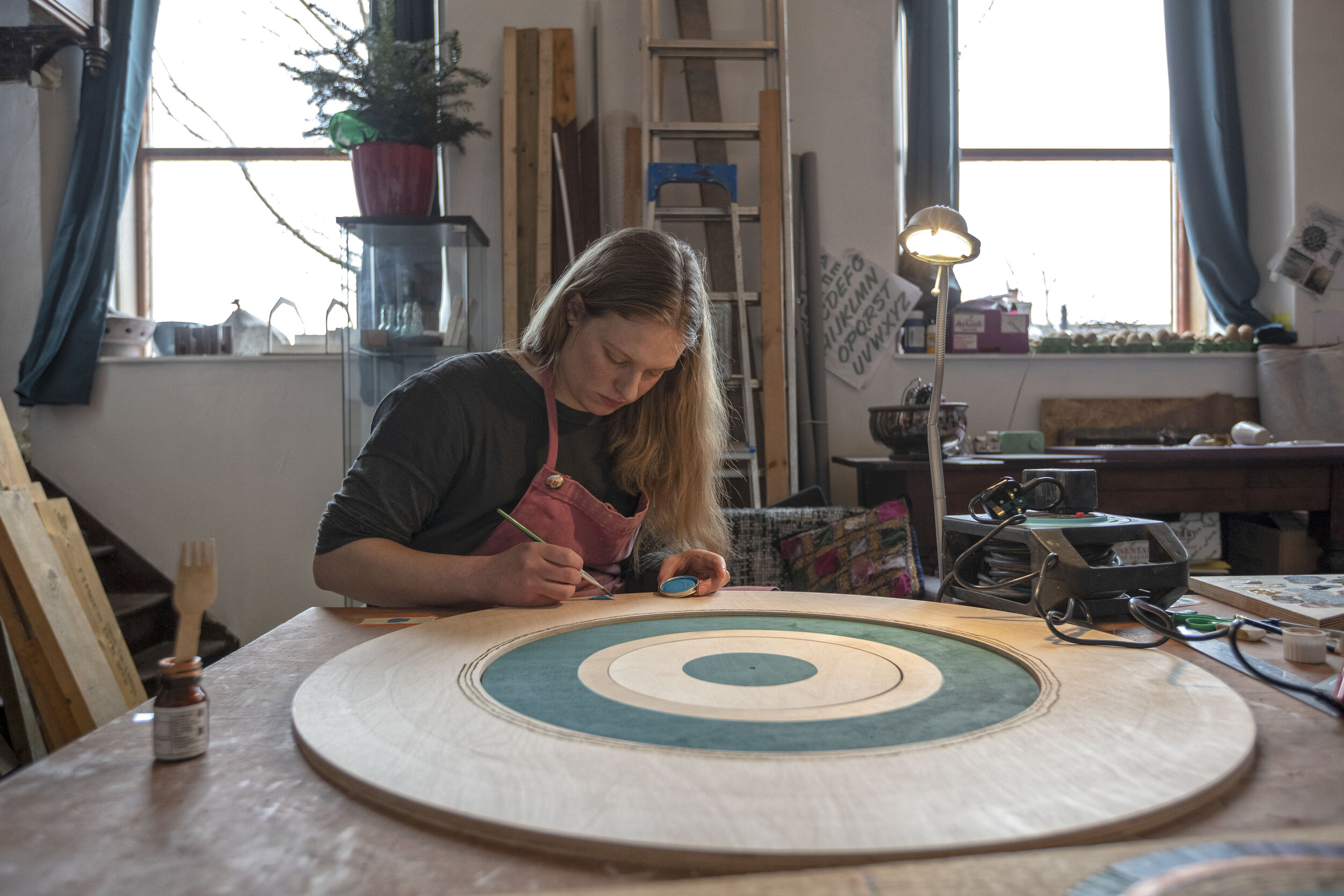
Katie Anderson at work in her studio, hand painting artworks for the Emergency department, inspired by human chromosome mapping and tree ring markings.
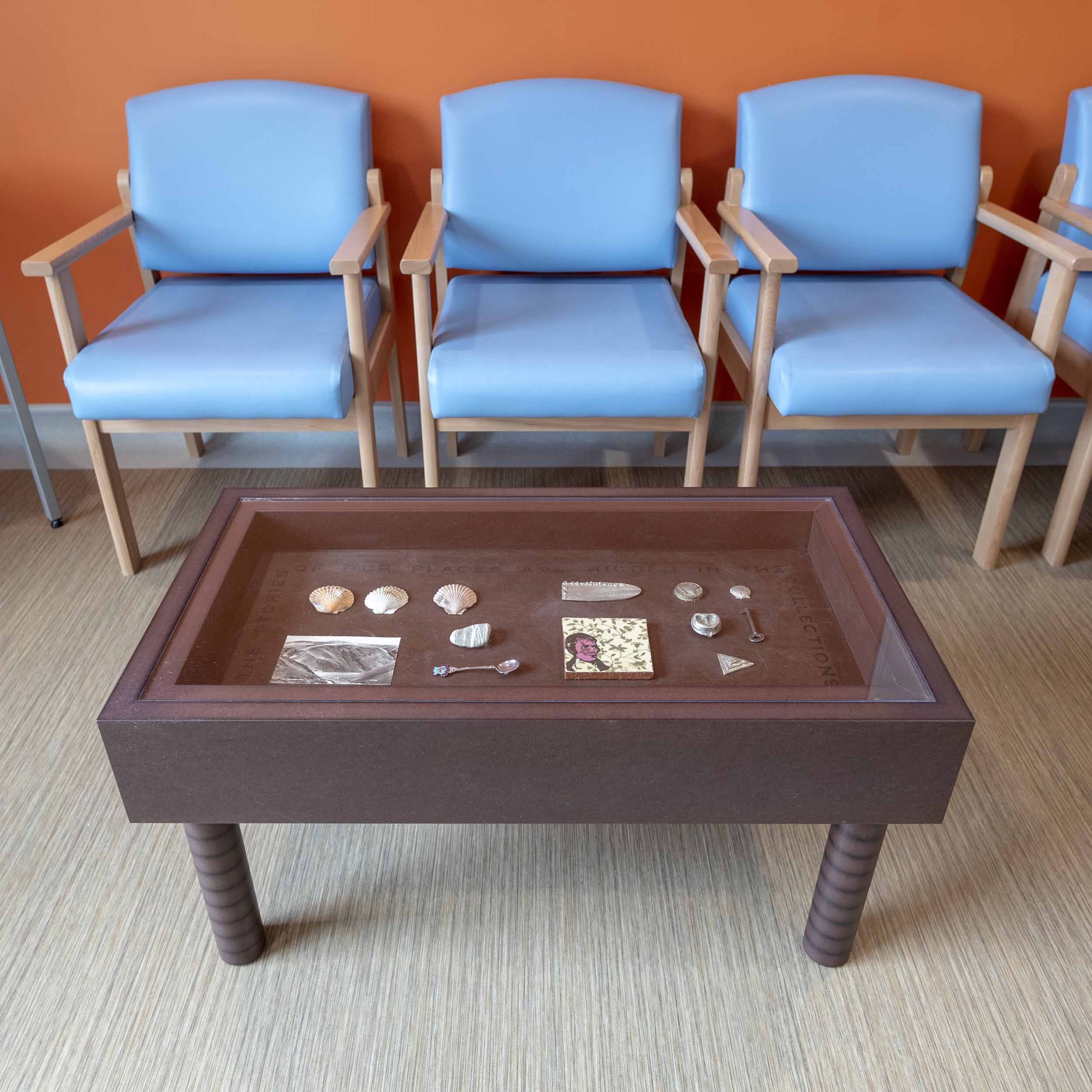

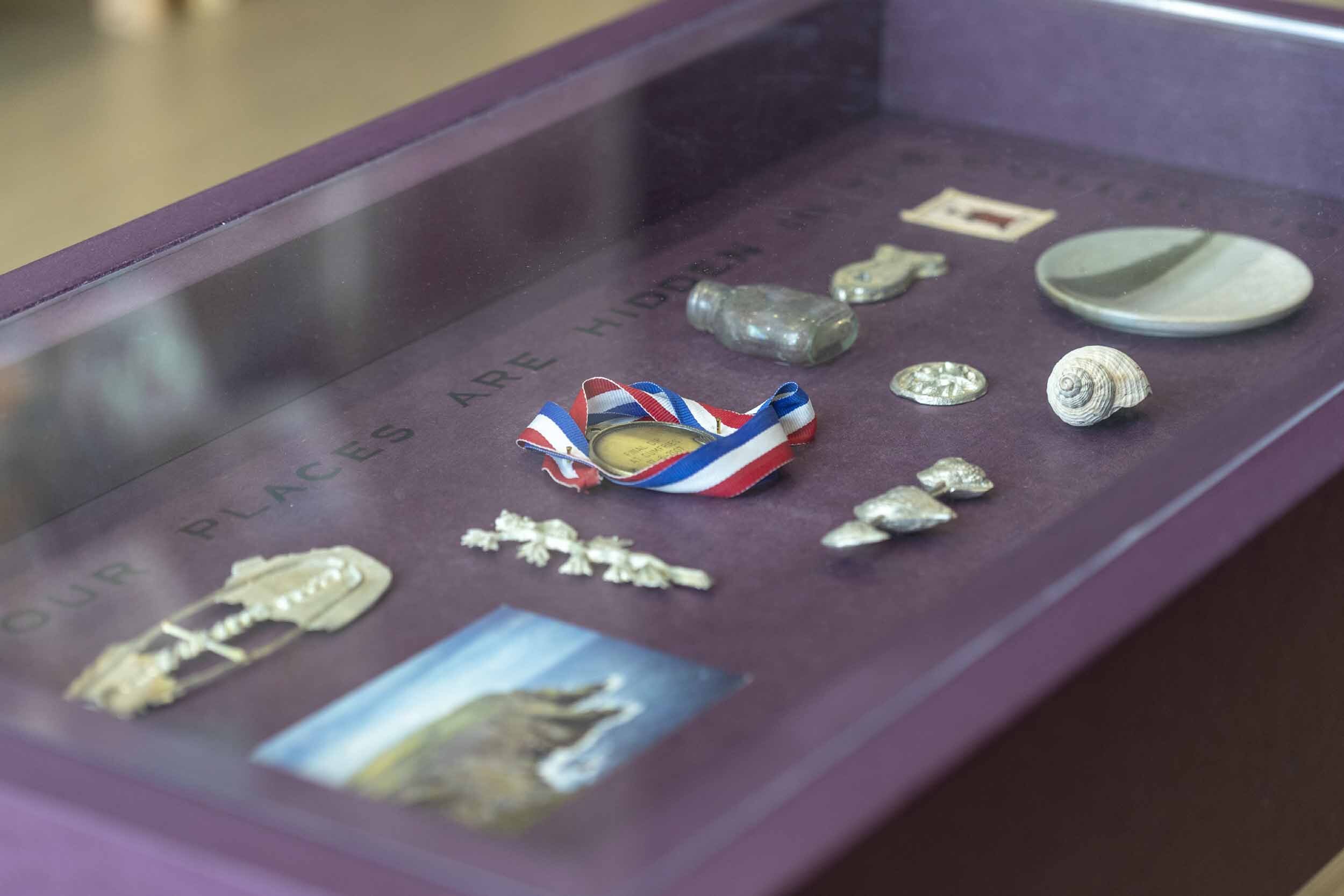
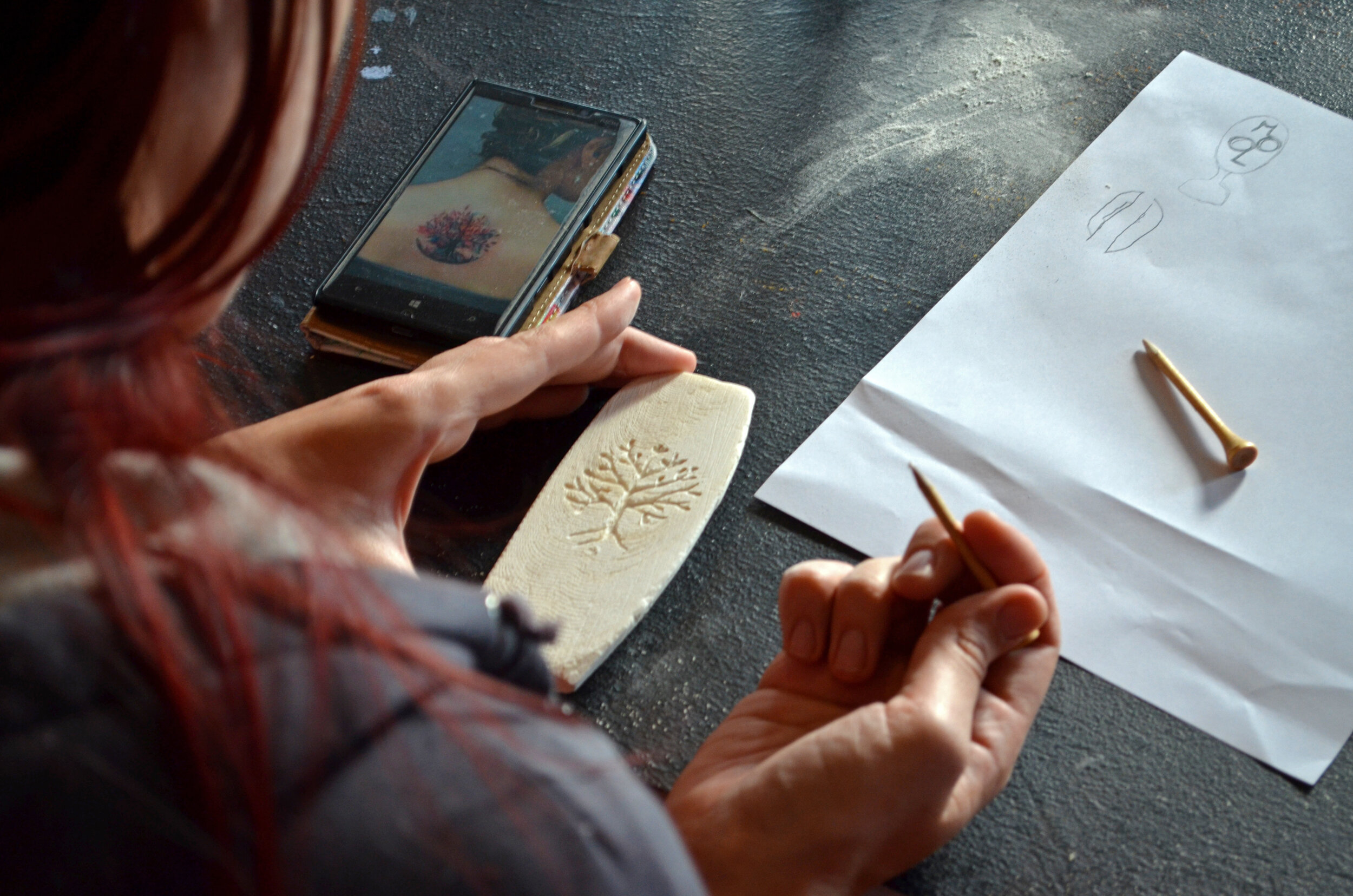
A coffee table in each of the ward socialisation spaces doubles as a collection case containing a combination of artworks and found objects, reflecting the stories and landscapes of Dumfries and Galloway. Objects include found natural objects and materials from beaches and woodlands across the region, vintage postcards and souvenirs. Artworks were contributed by art students from Dumfries and Galloway College, young people as part of workshops with blueprint100, and by local artists Clare Dawdry, Chris Taylor and Katie Anderson.
The workshops were led by Katie Anderson and focused on the Mobile Foundry which allows participants to cast a series of pewter and aluminum objects and artefacts. Participants were introduced to mould making techniques, learning about cuttlefish mould making and wax carving, before casting metal in to the prepared moulds.
Writer Martin O’Neill held a ‘Writer in Waiting’ event in the foyer of the existing hospital, inviting visitors and staff to use a typewriter to contribute their own writing and poetry. Martin went on to write his own poetry based on anagrams of ‘hospital waiting room’ which has inspired a range of play based items and artworks for the Women & Children’s department.
A range of items have been developed for the wait and play areas on the children’s ward including wall poems with coloured translucent panels which can be moved to highlight each word as the poem is read and tall chairs which incorporate a game based on rhyming words. Illustrations inspired by Martin’s poetry have been created by illustrator Kate McLelland.
Rory Laycock with Dress for the Weather has created ‘heat map’ play structures for outpatient waiting areas using thermal imaging software.
A series of three artworks has been created by Katie Anderson for single bedrooms which reference the woodland environment of the region. Images have been created by hand, layering up individual shapes to make repeat patterns and provide textural detail, before being digitally coloured and printed.

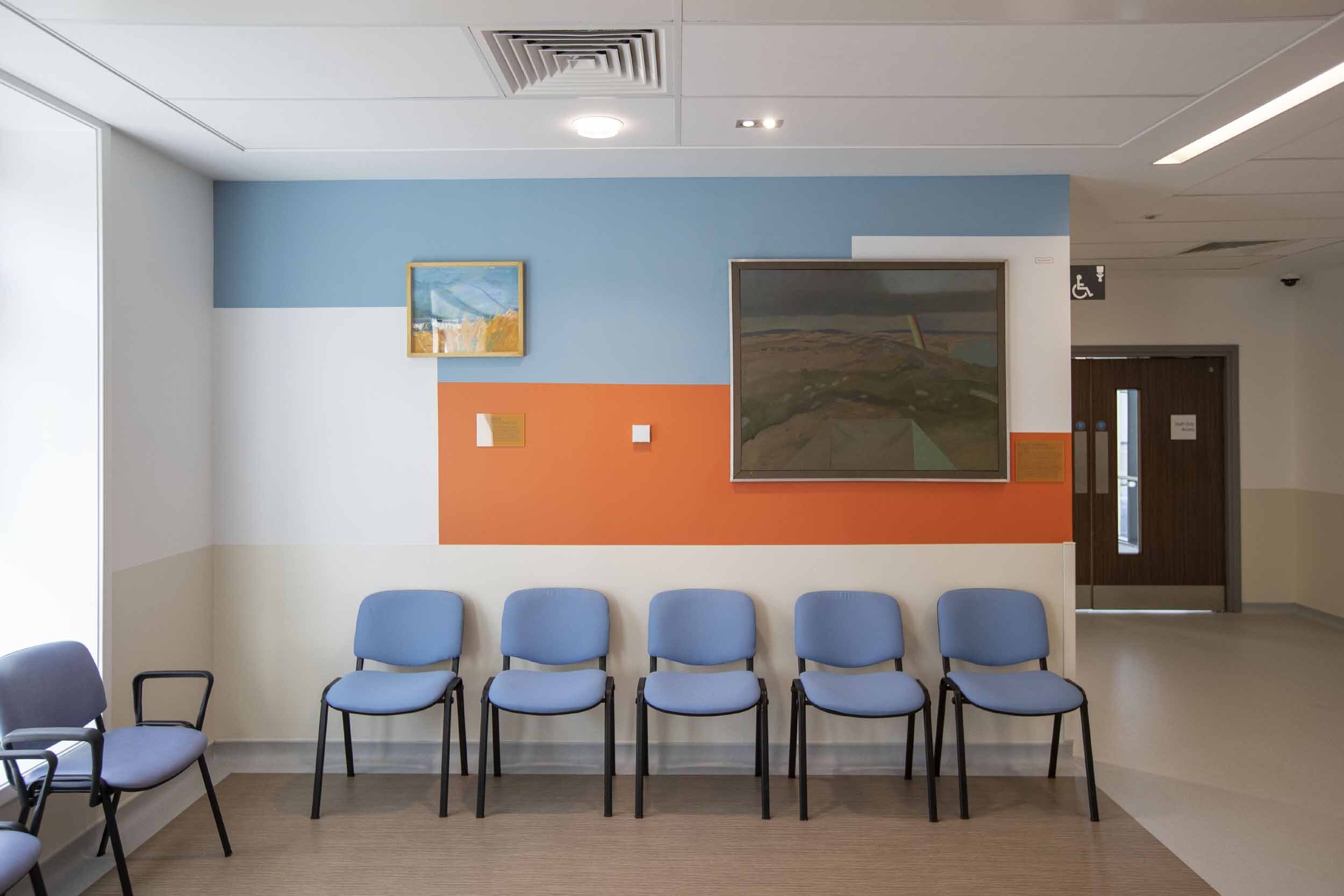
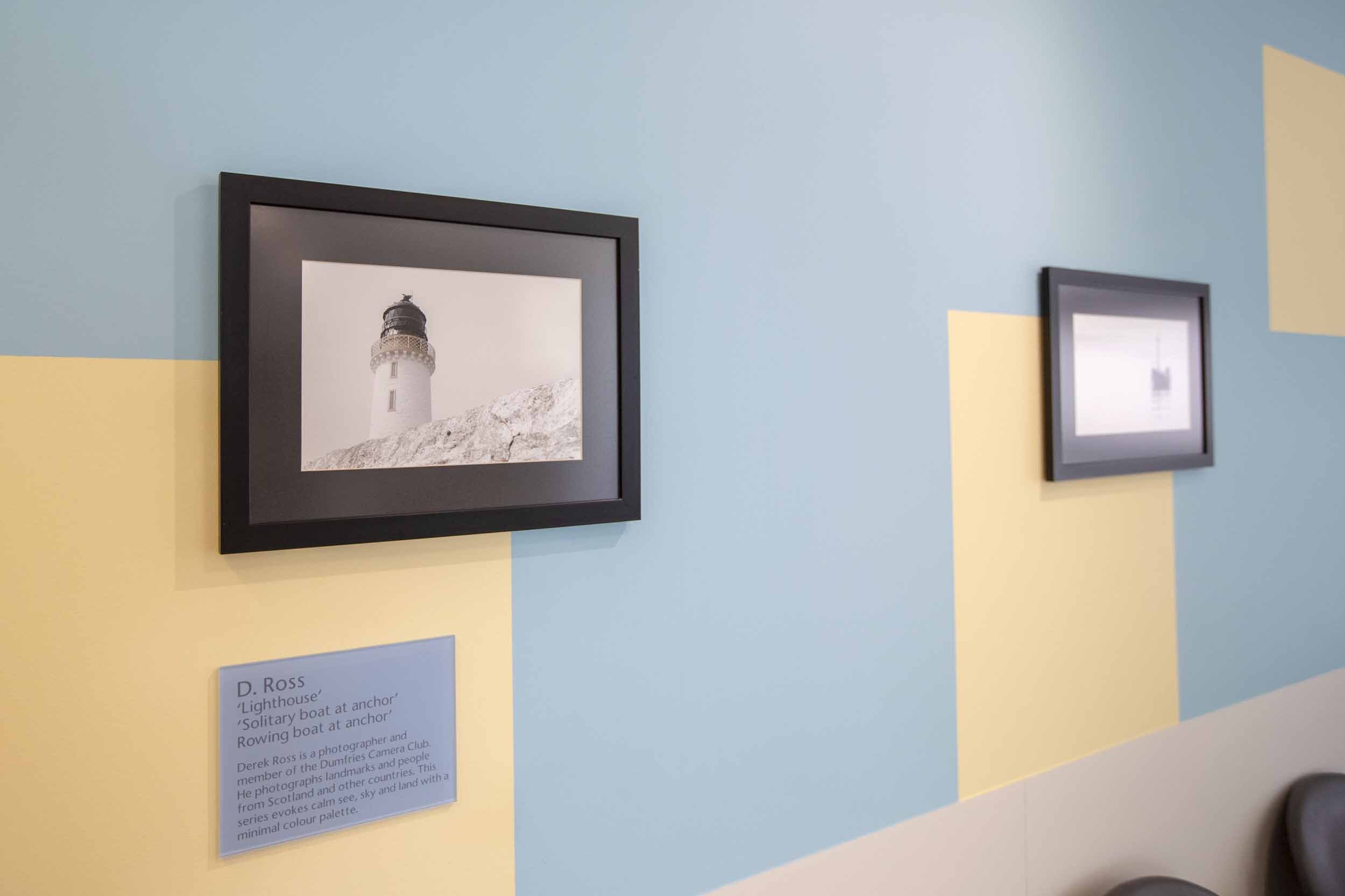

Dress for the Weather and the team of associate artists documented every artwork at the existing hospital. They then selected fifty artworks to be installed at the new hospital, including those with local significance and some with strong links to the staff and stories from specific wards. A selection of works are displayed on colourful feature walls in the waiting area outside each of the eight wards. Others are located in the public corridors; based on the concept of ‘the window at the end of a corridor’, they are located at key junctions or in locations where they can be viewed from a distance whilst moving along a corridor.
Keywords:
Credits: Photography by Colin Tennant


